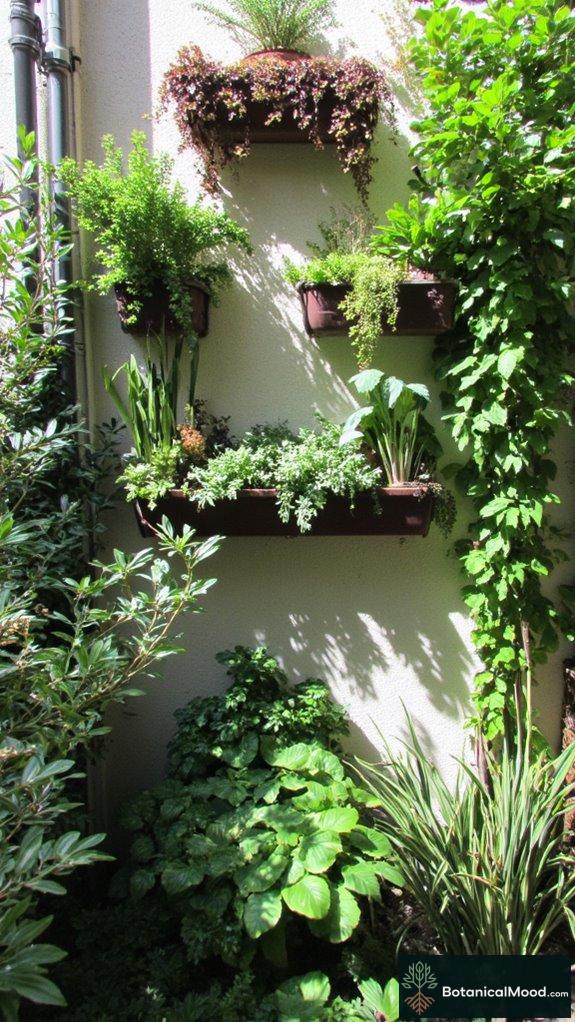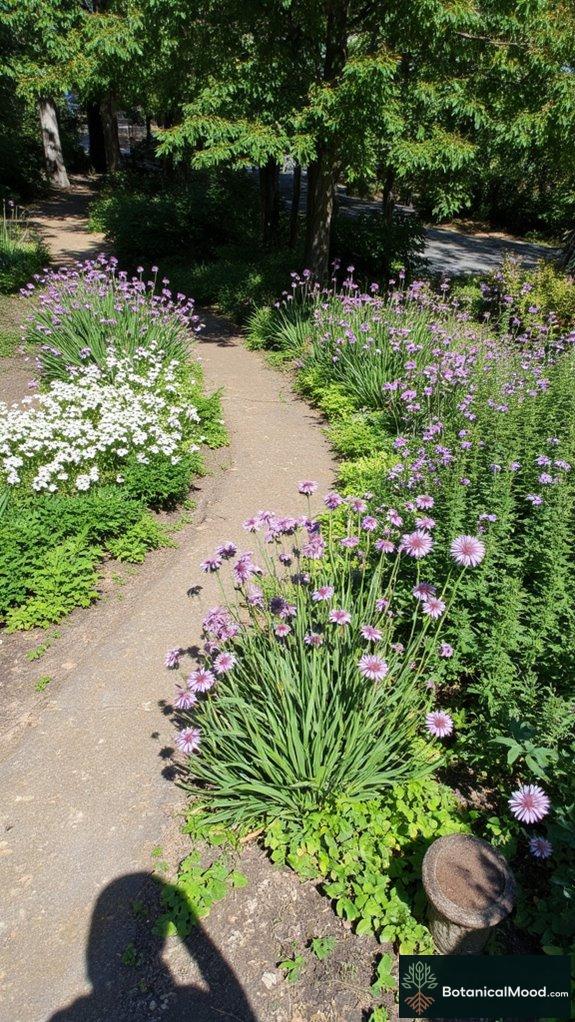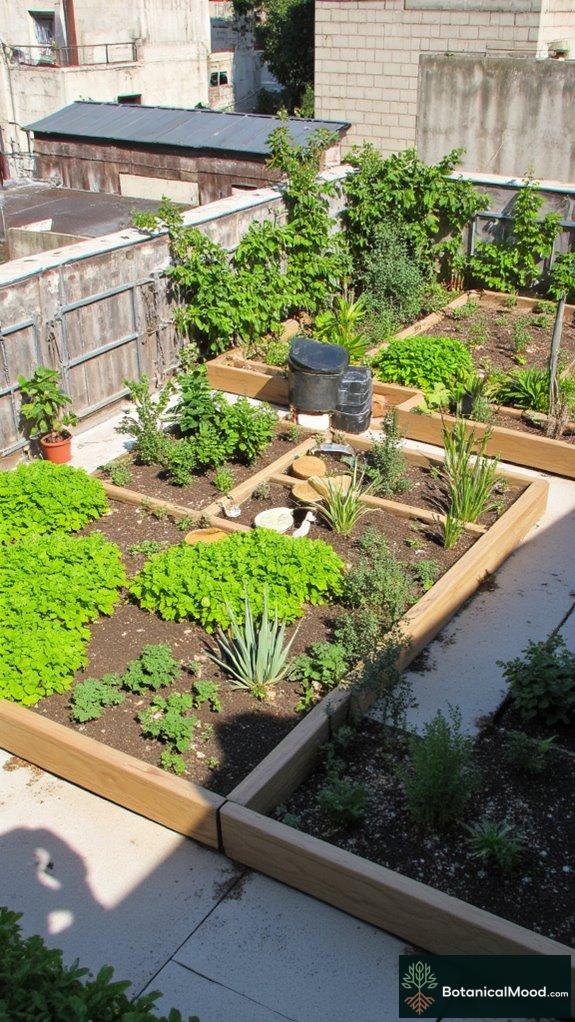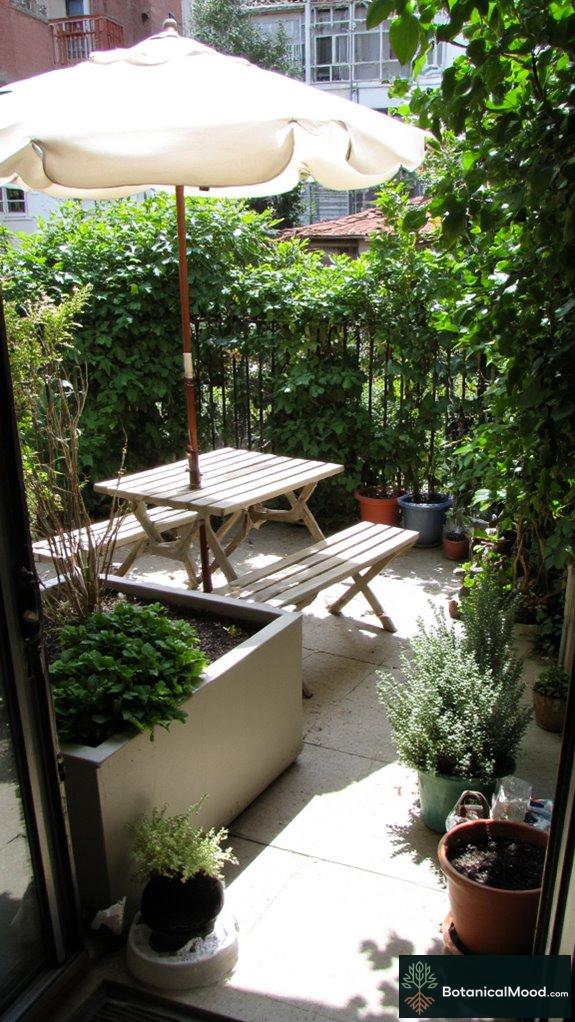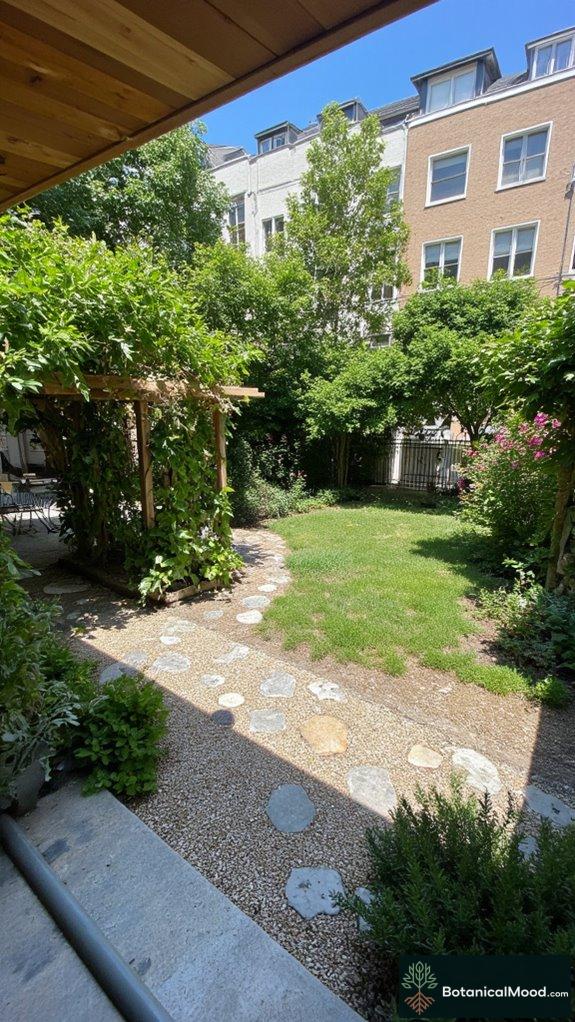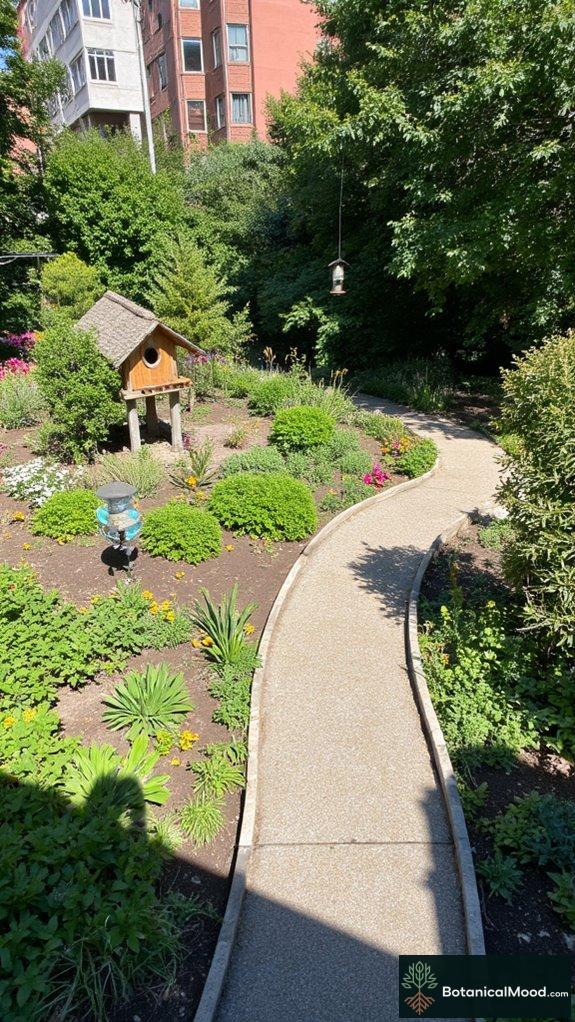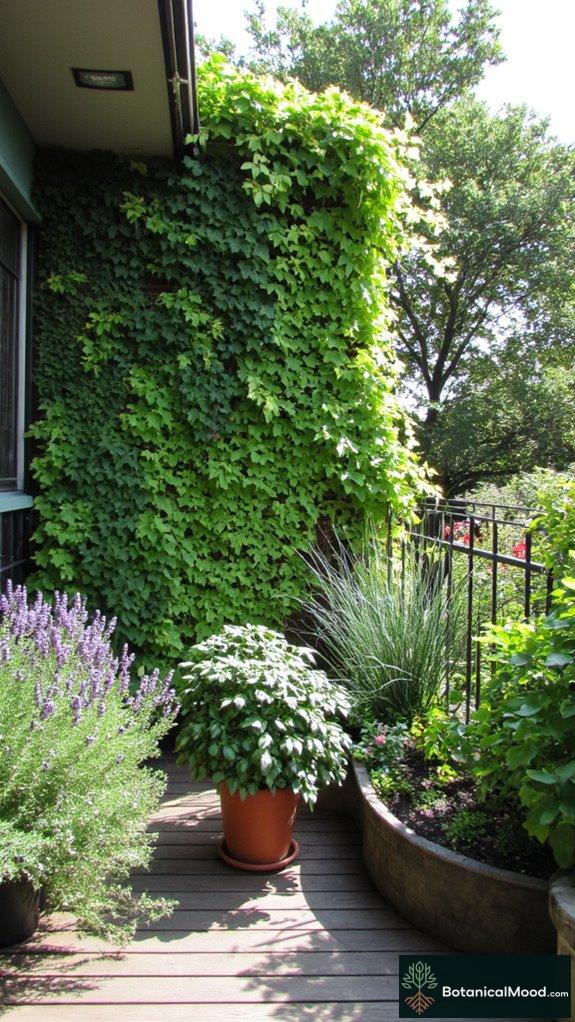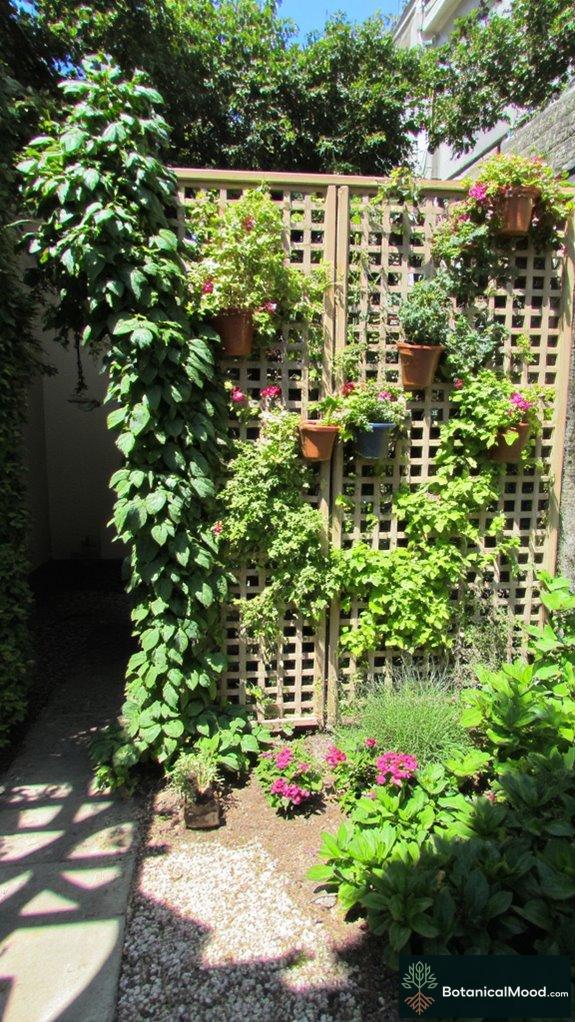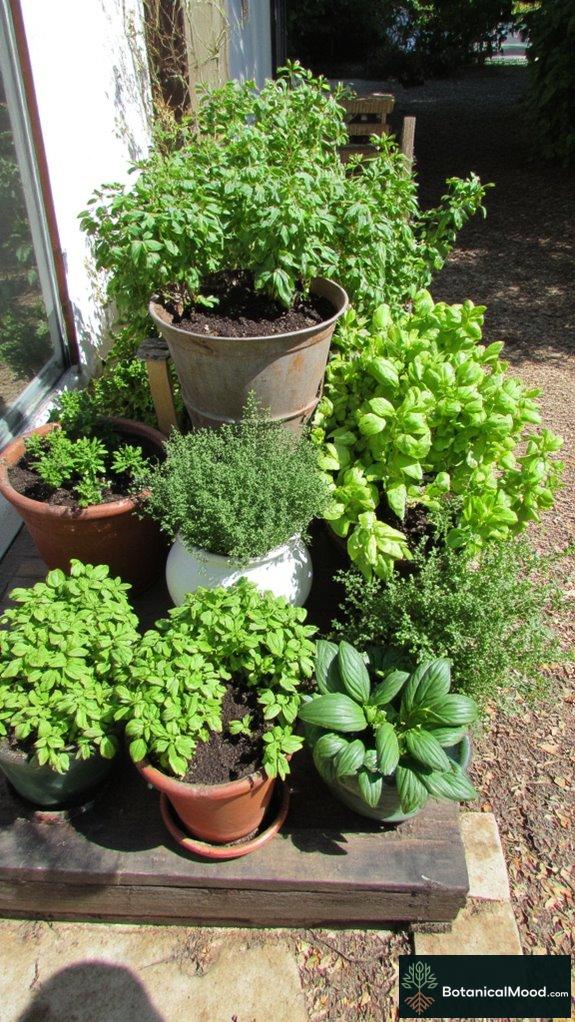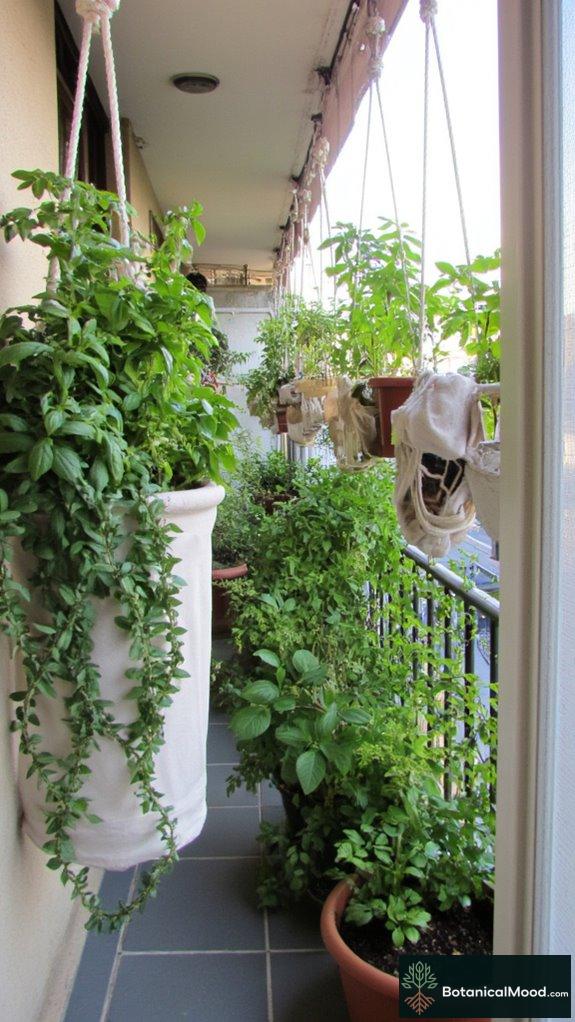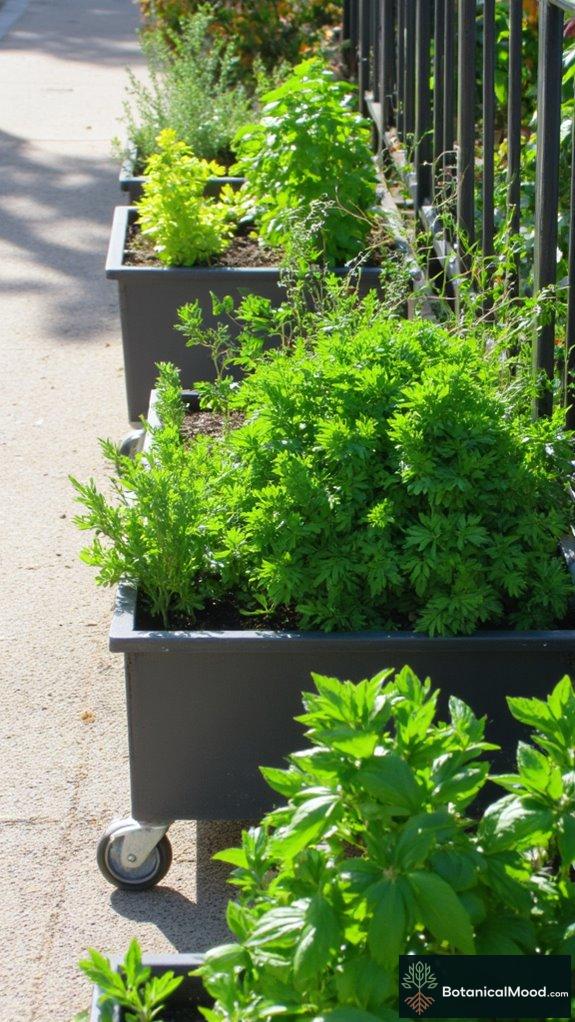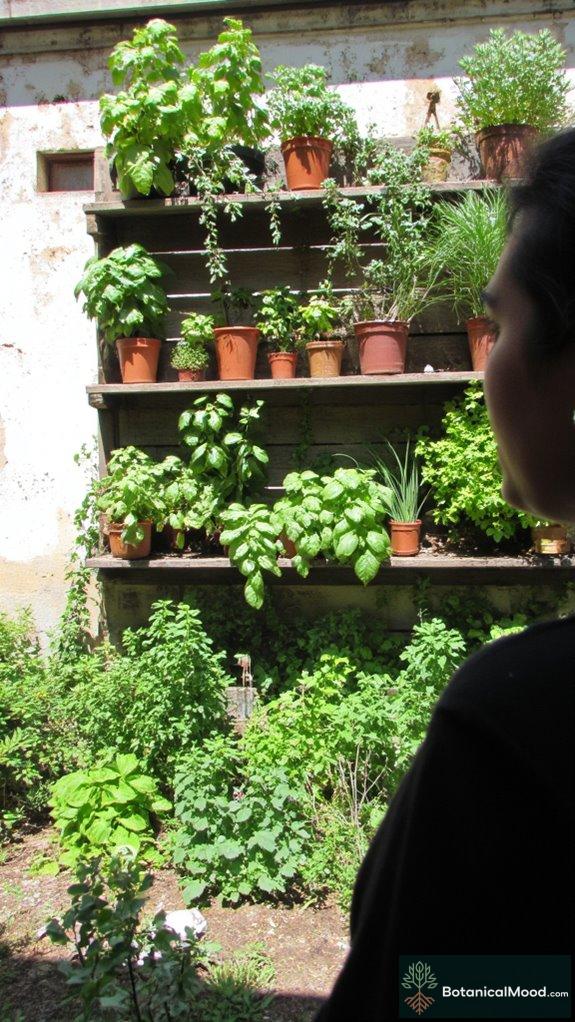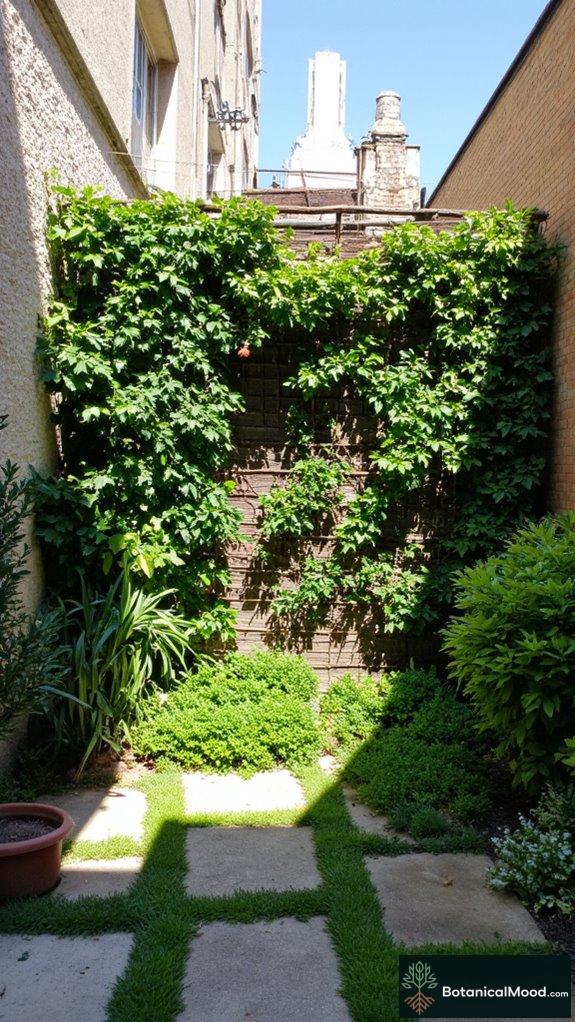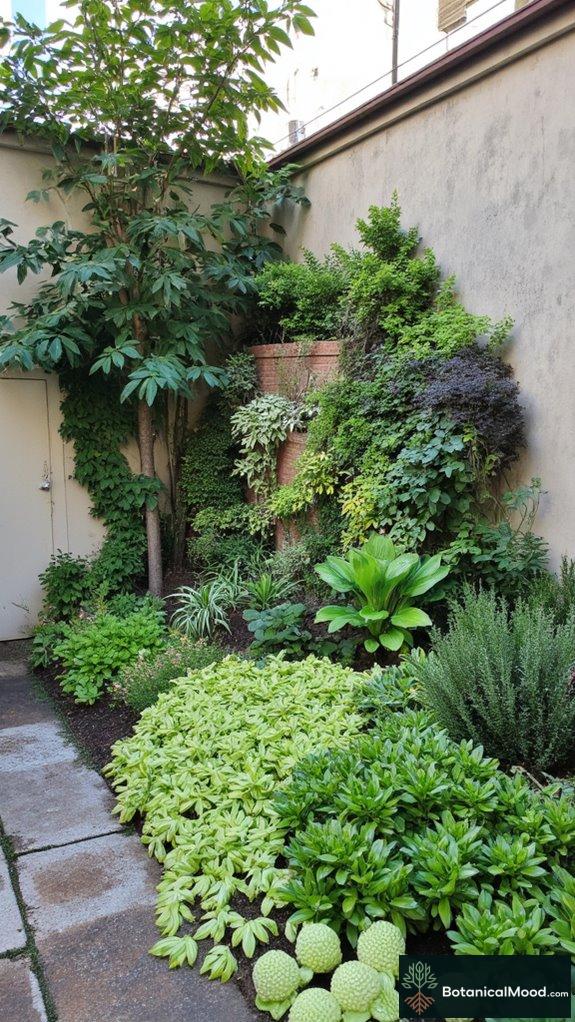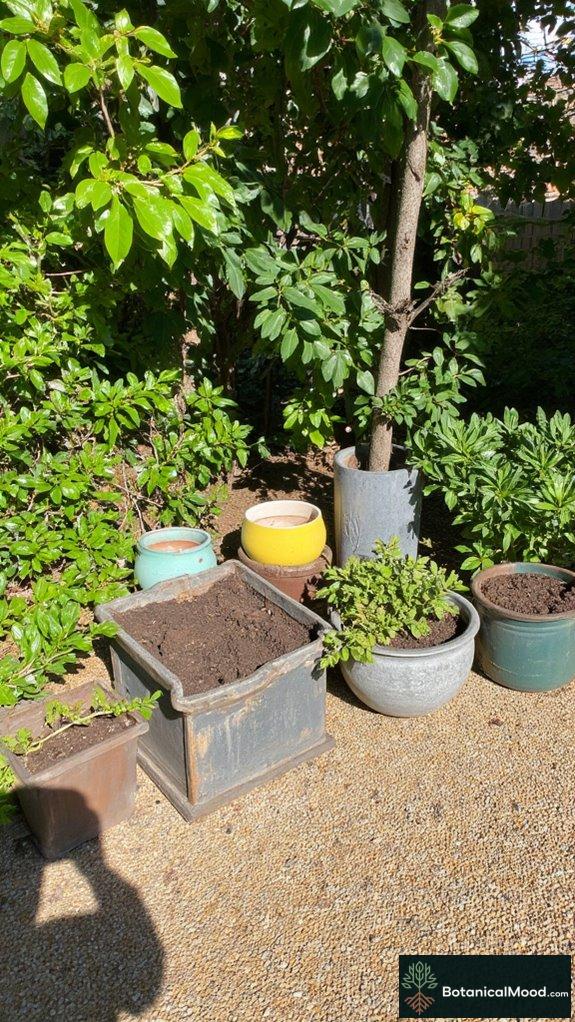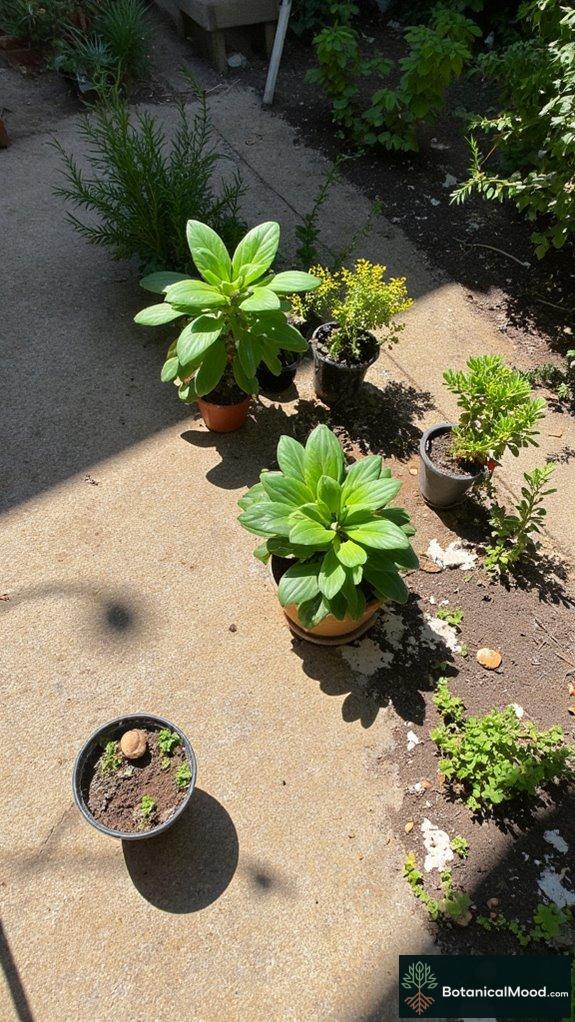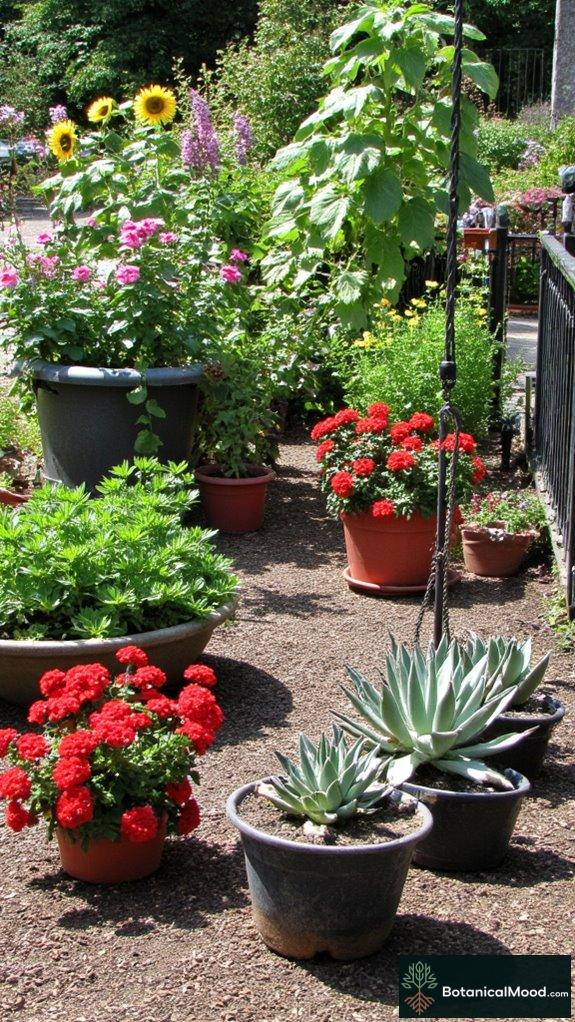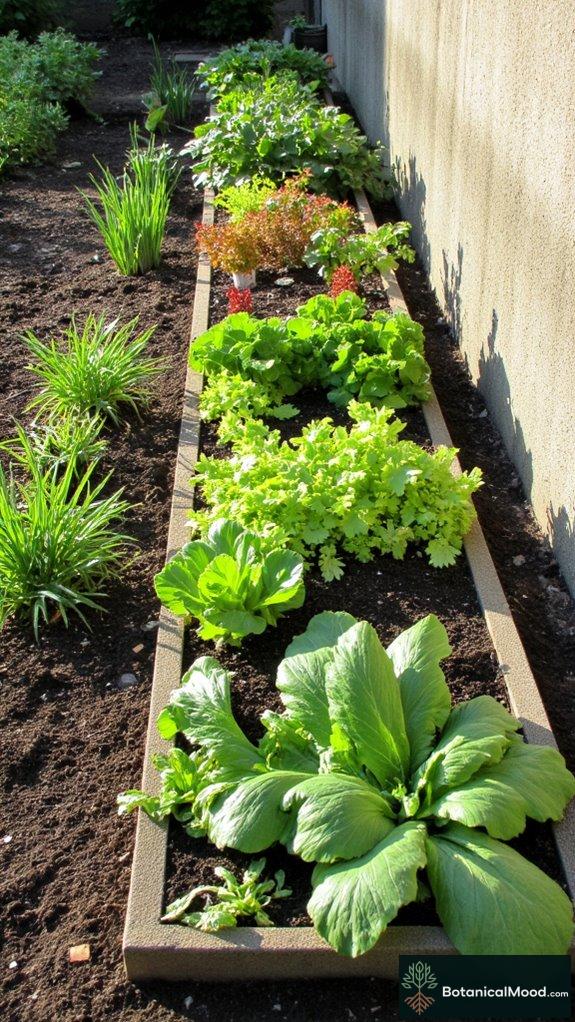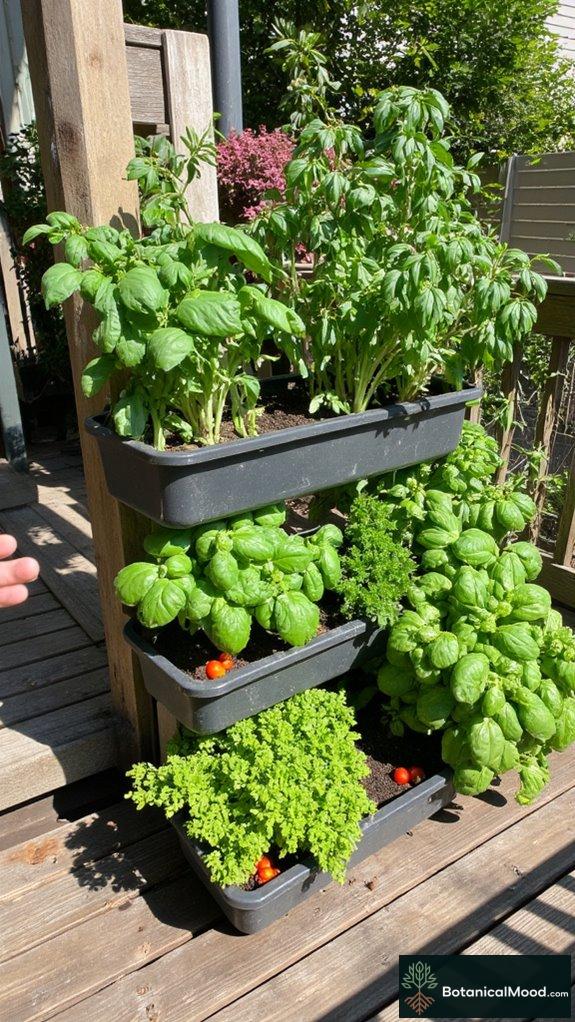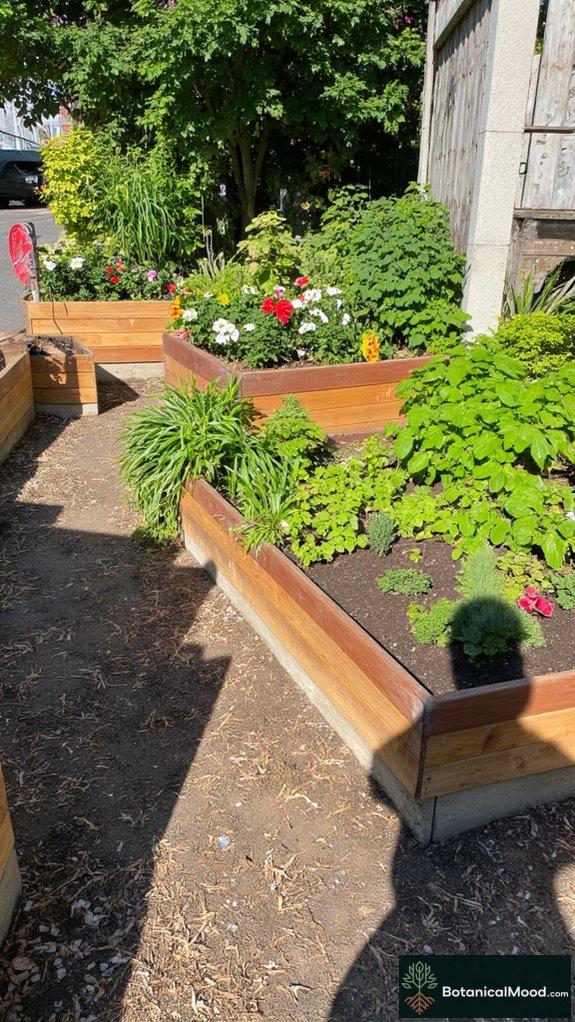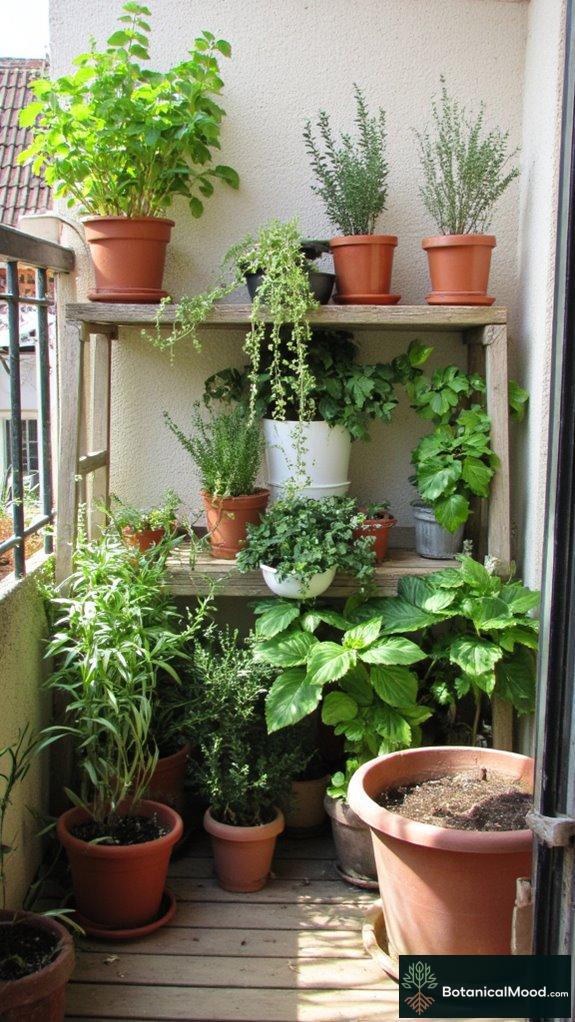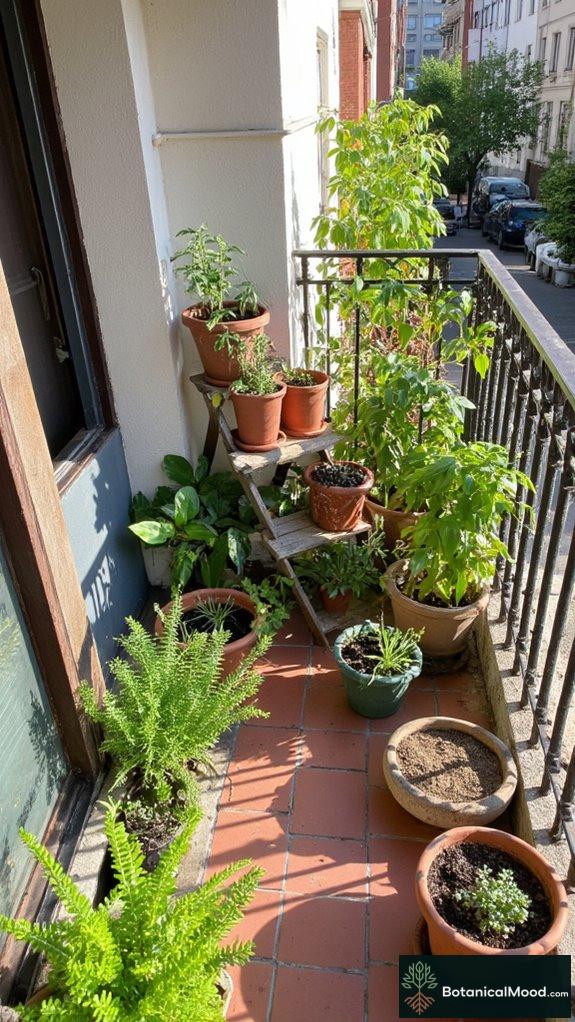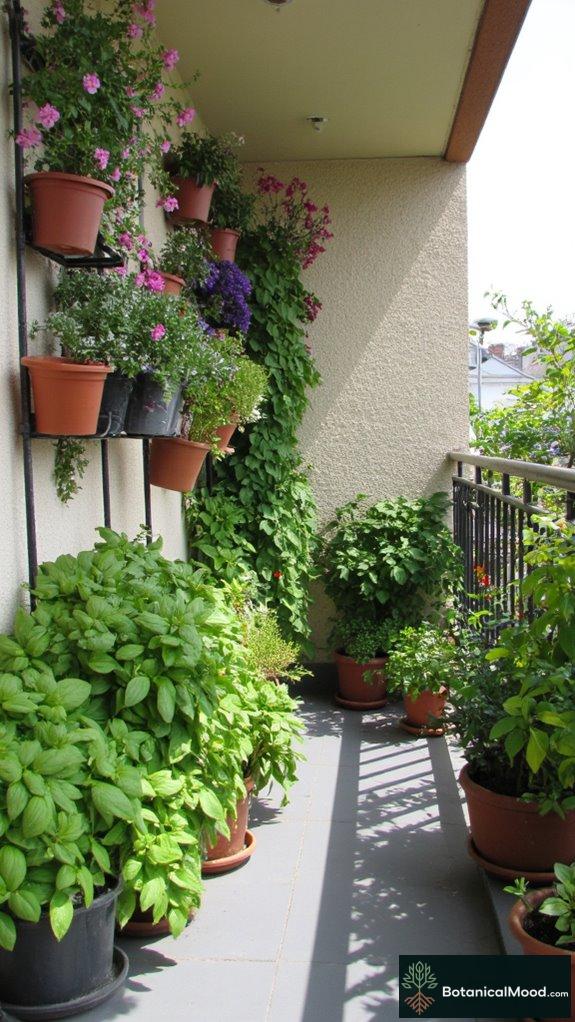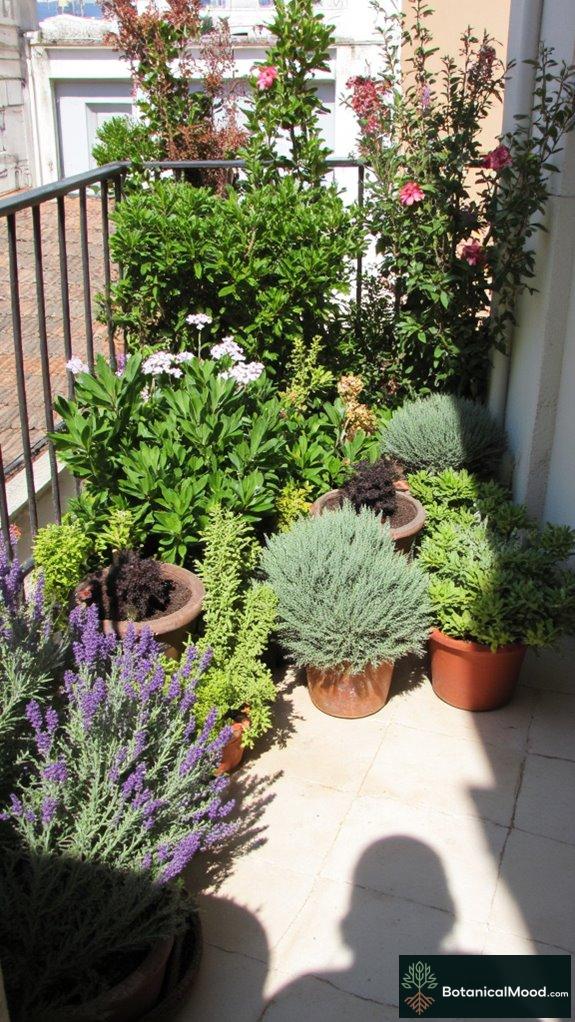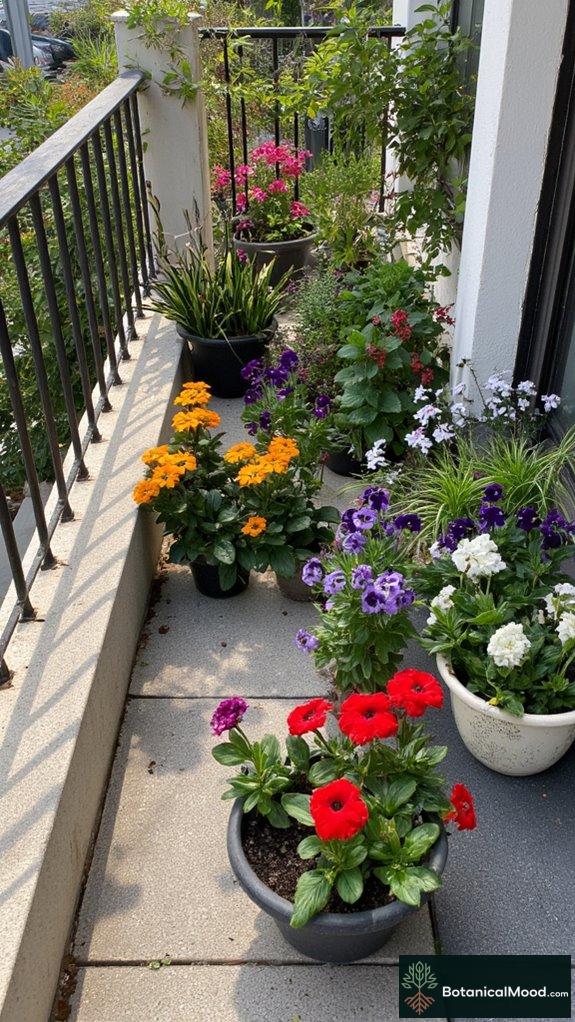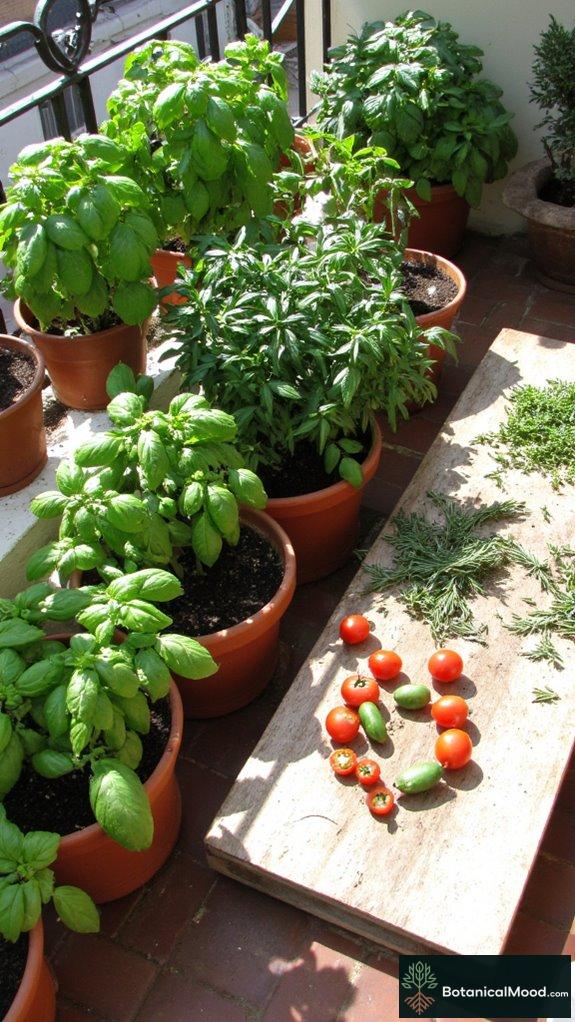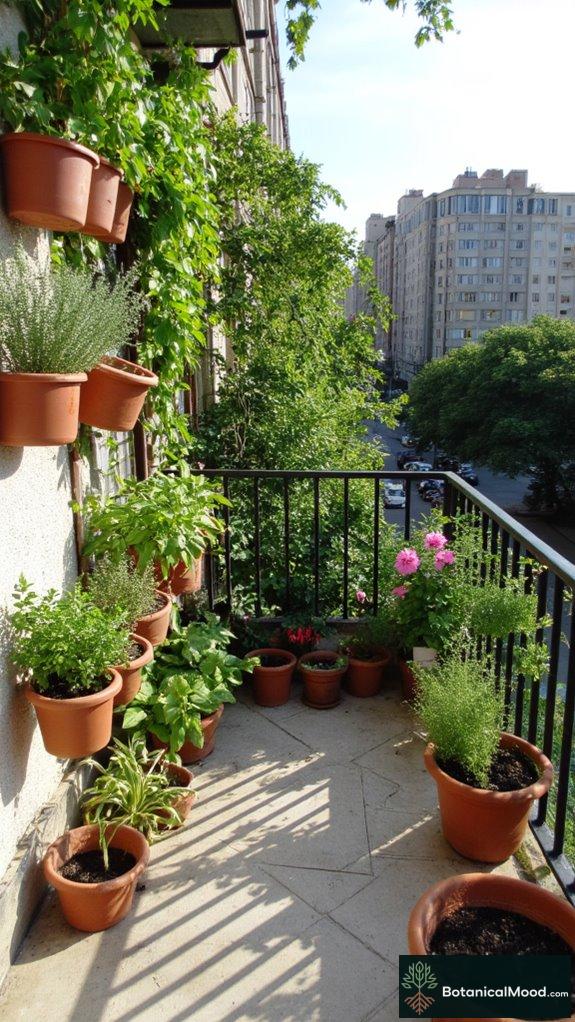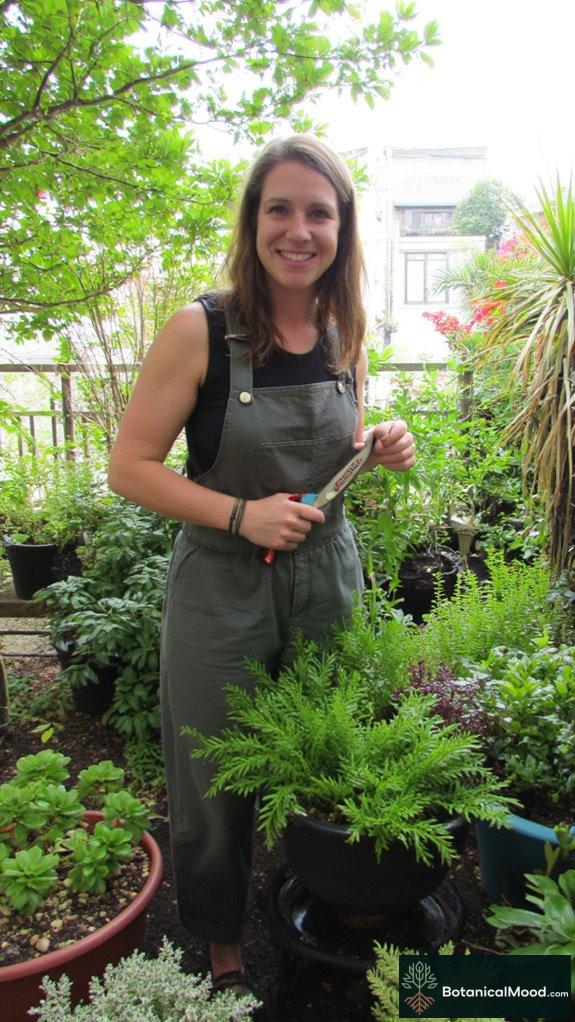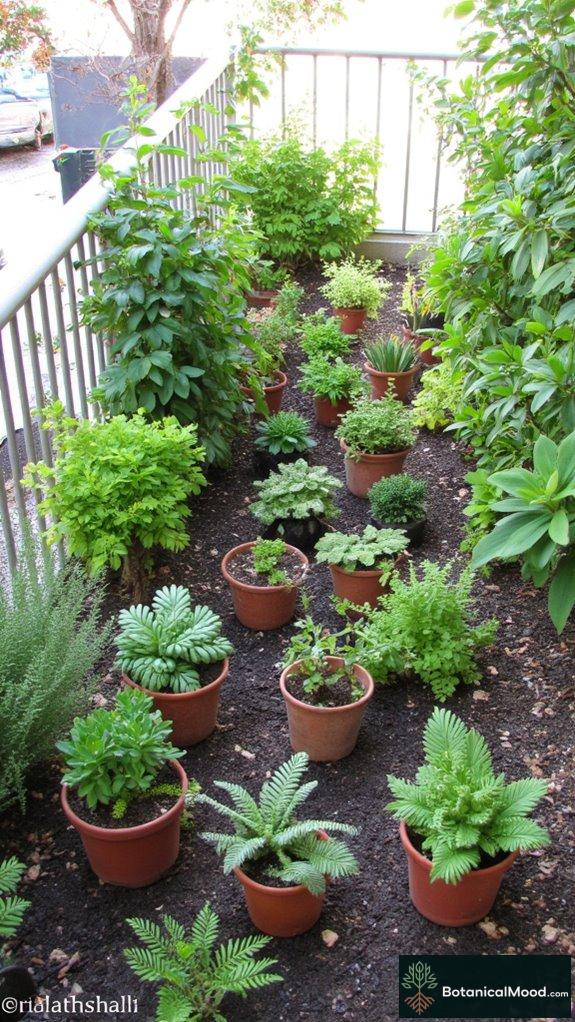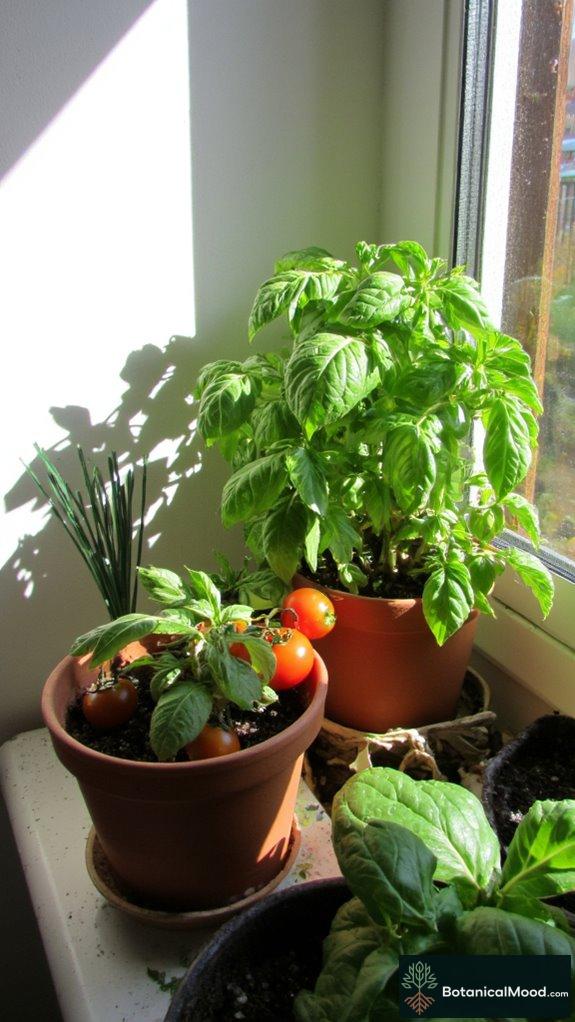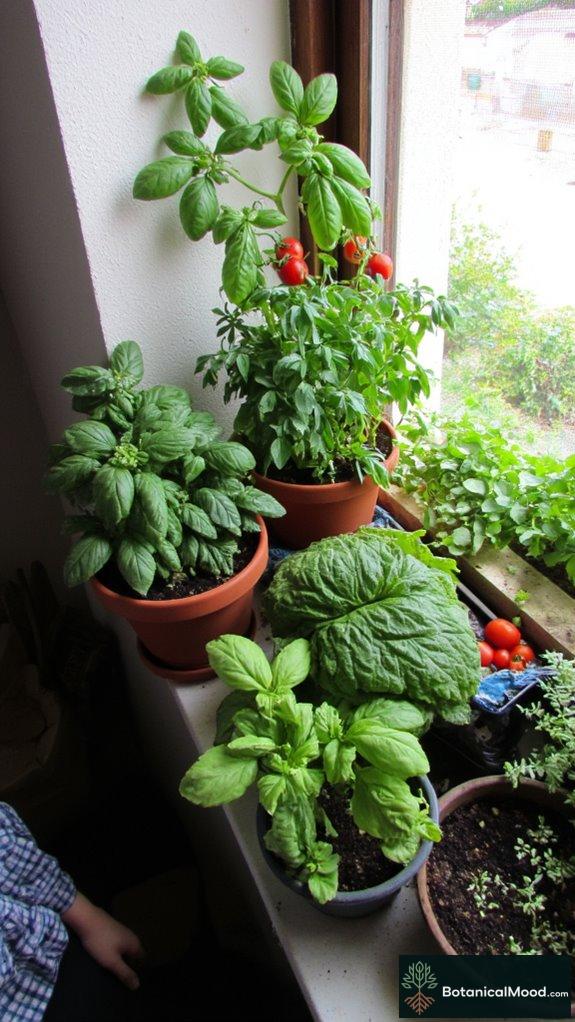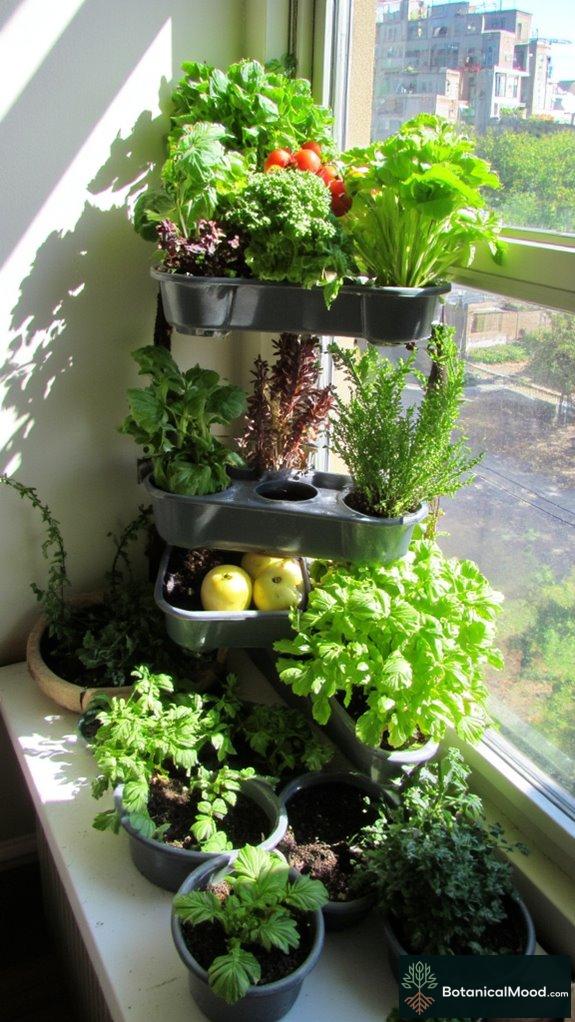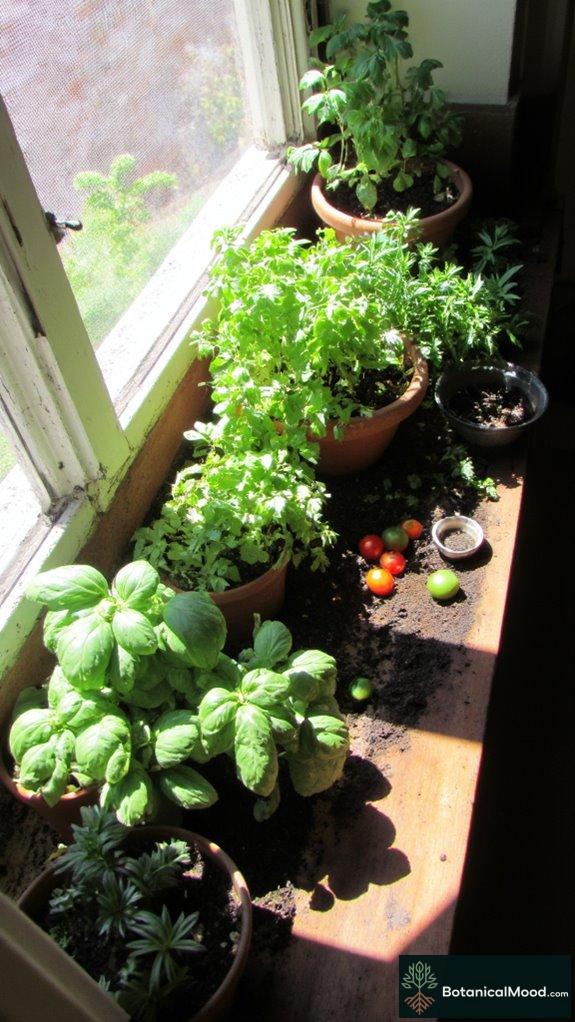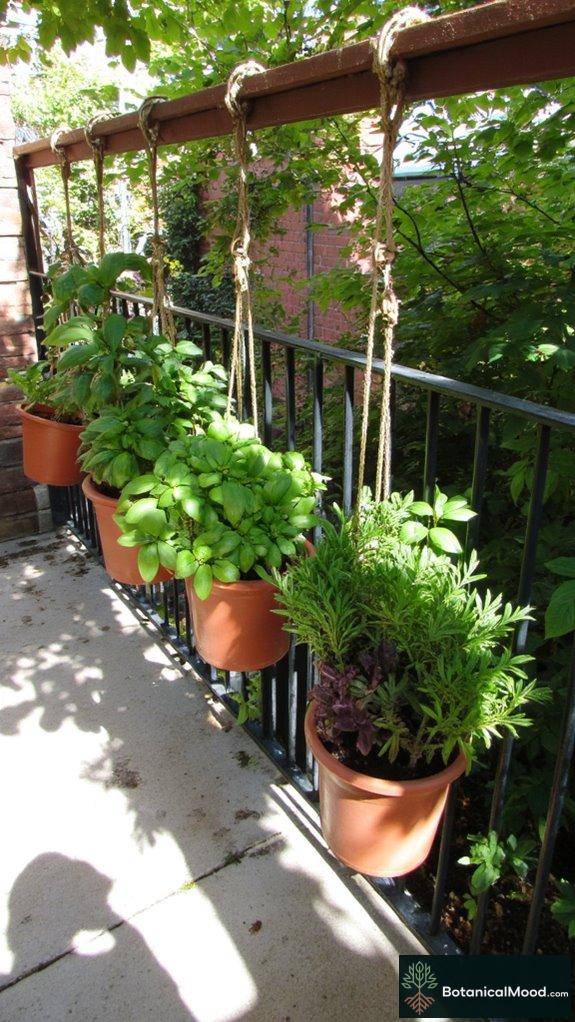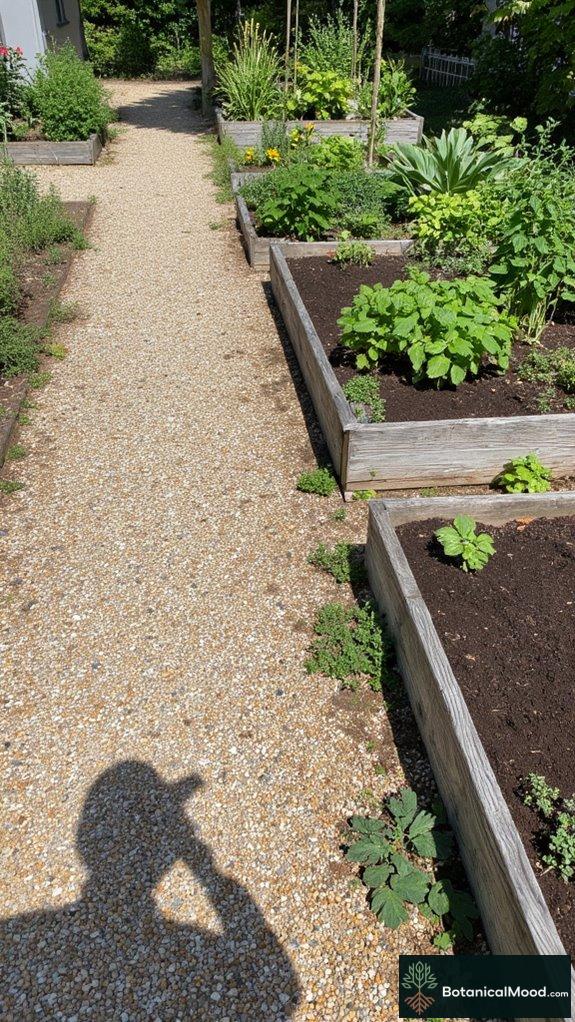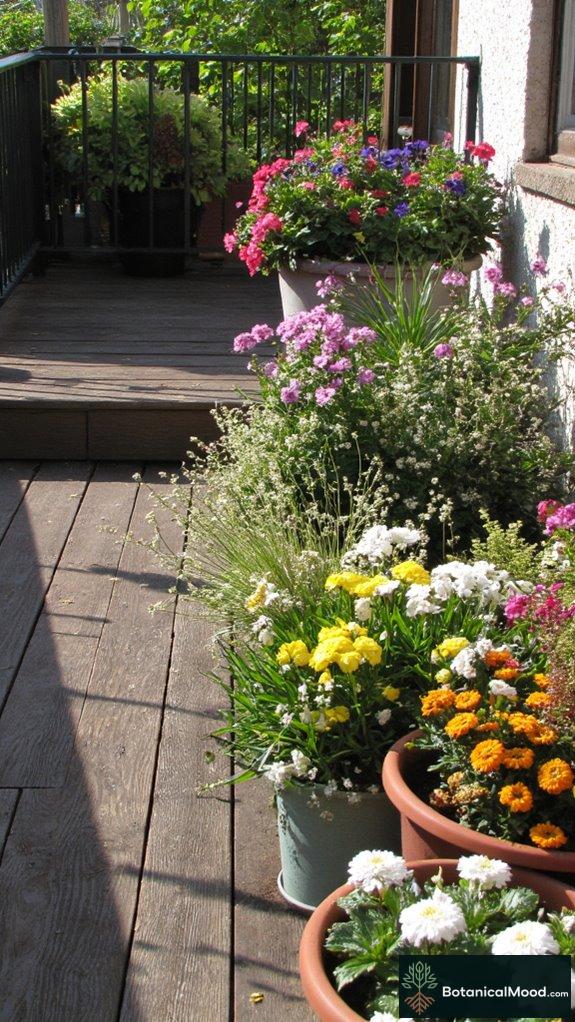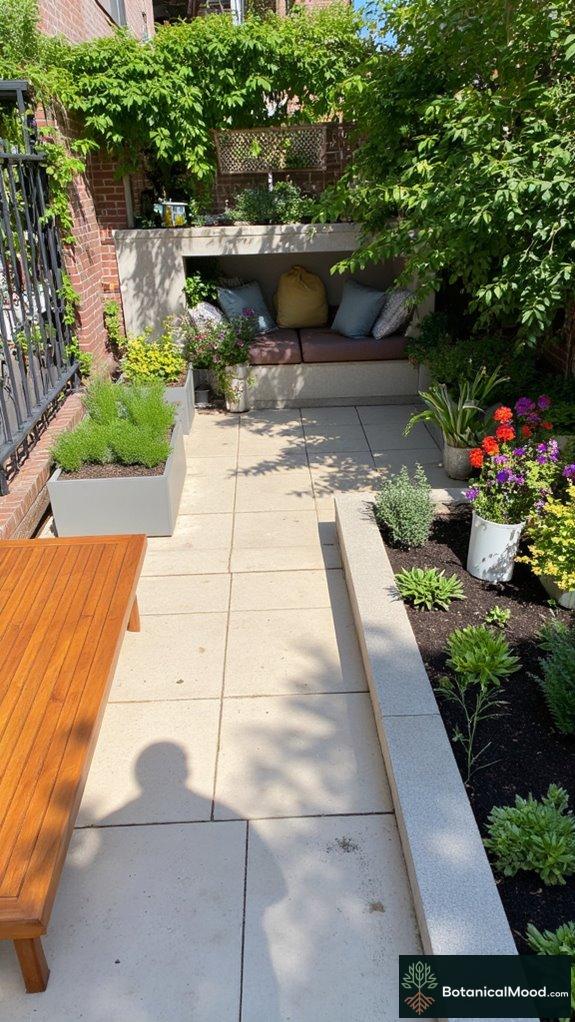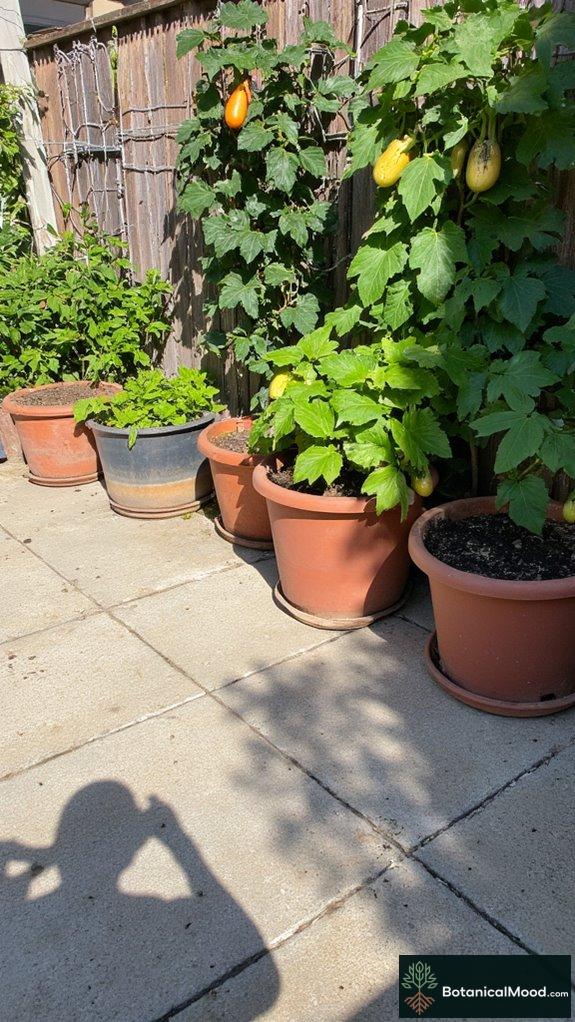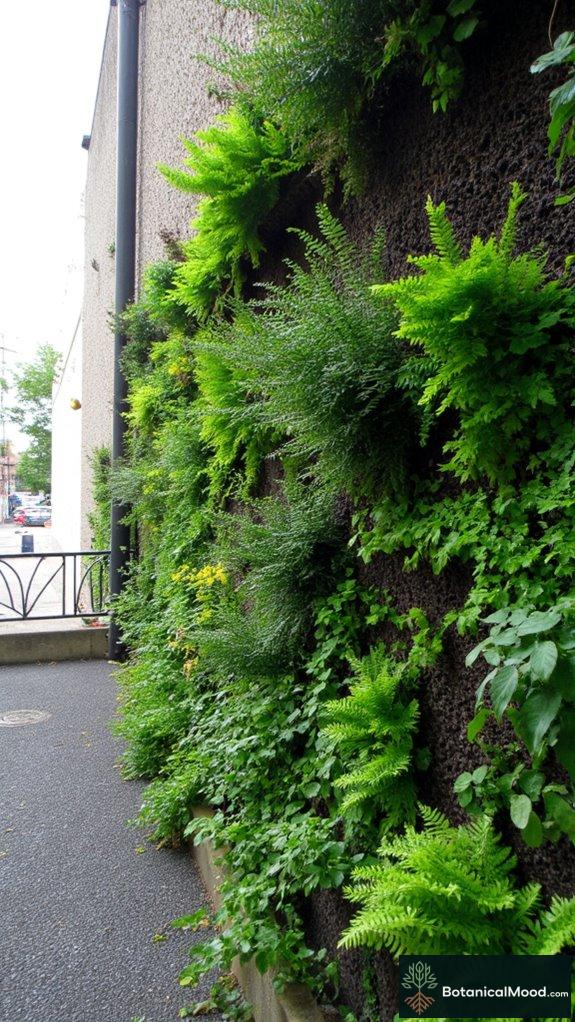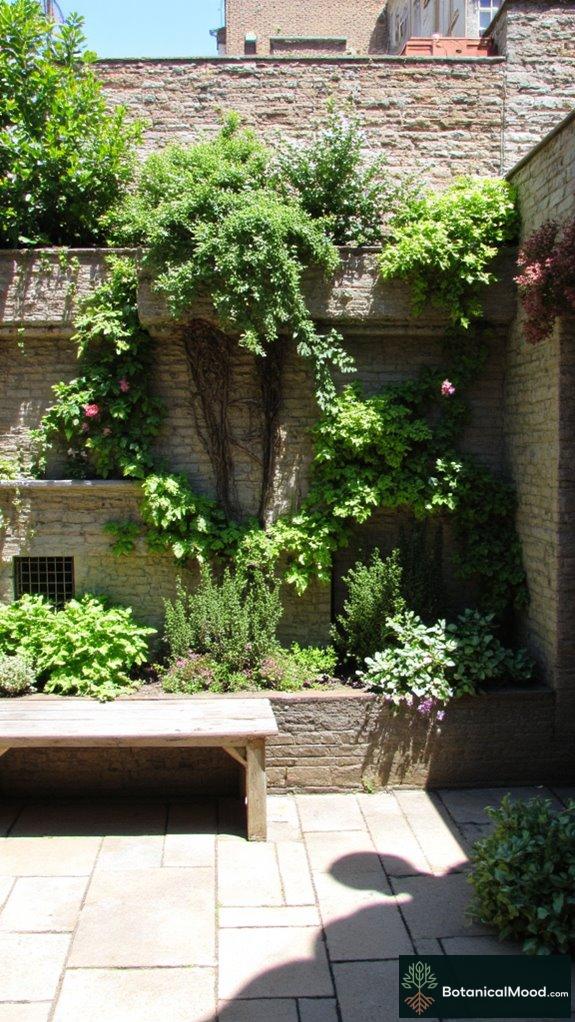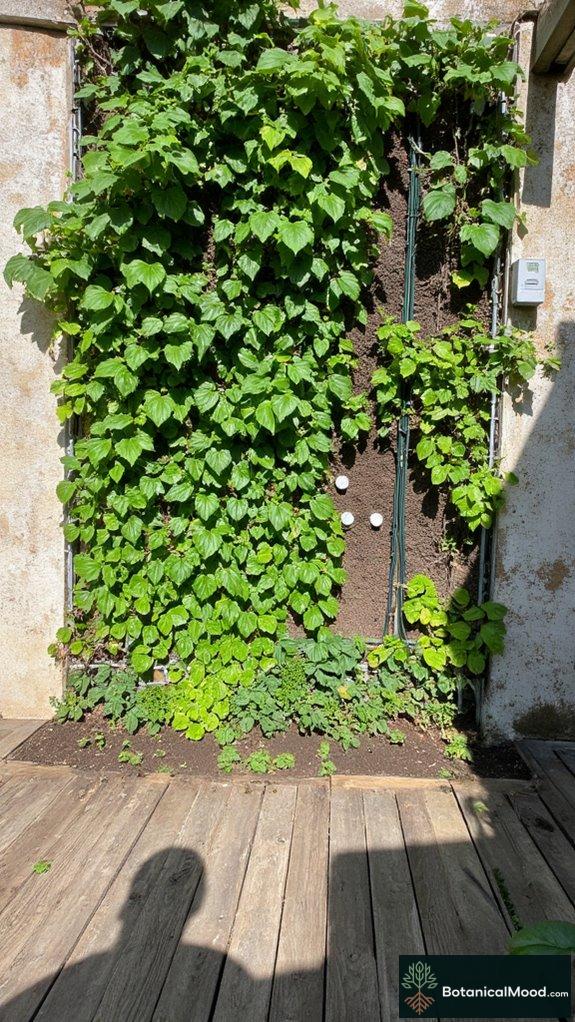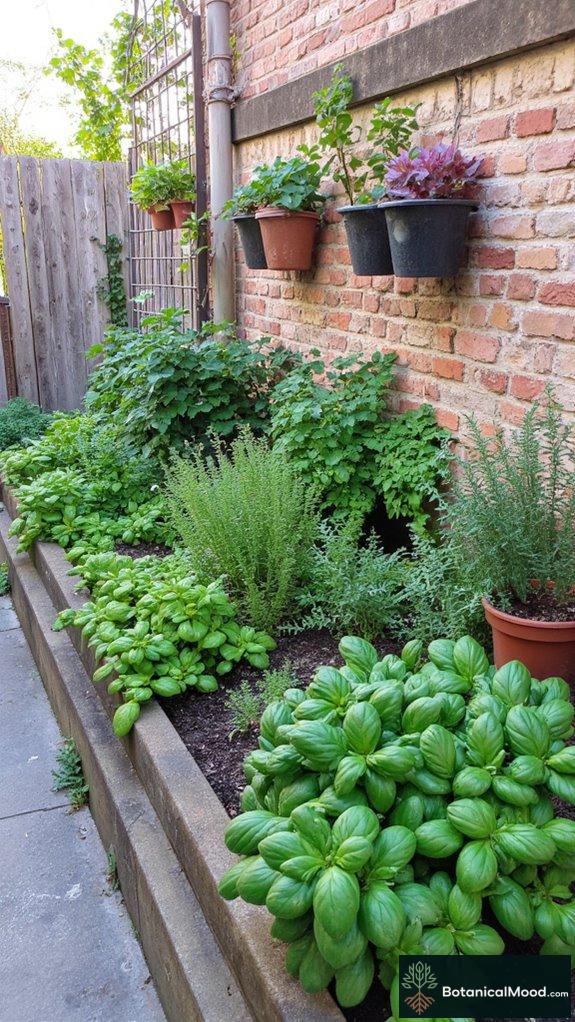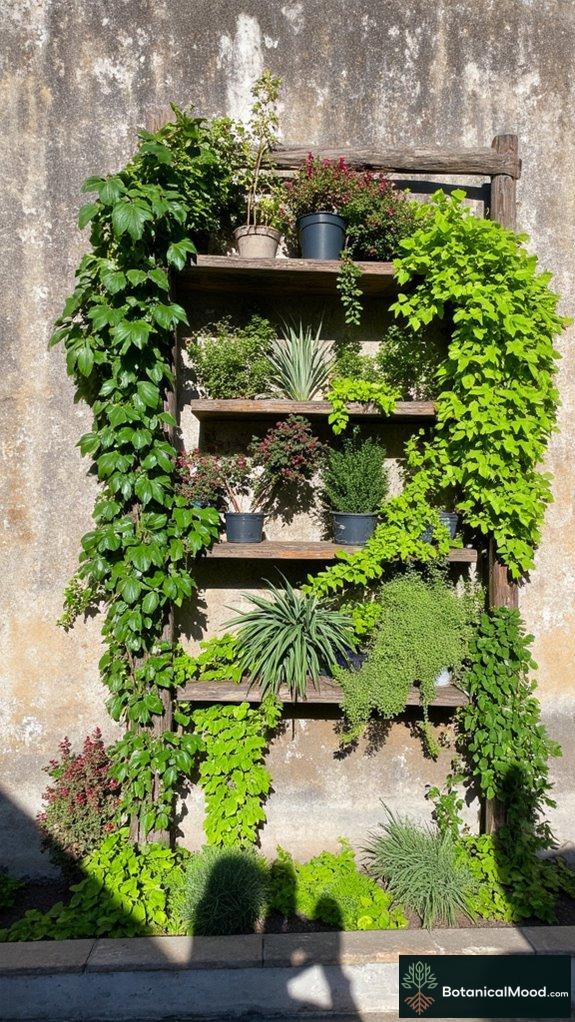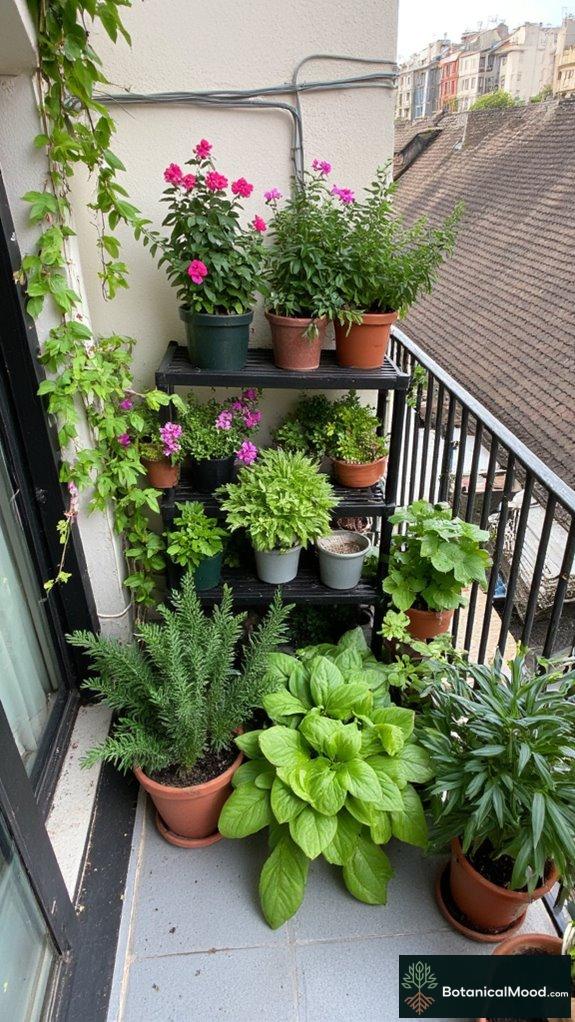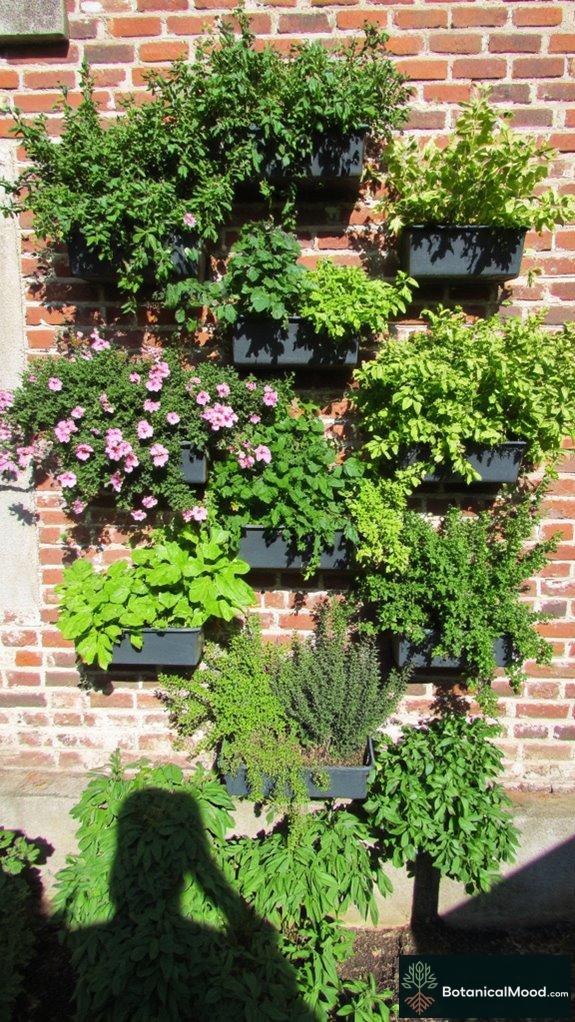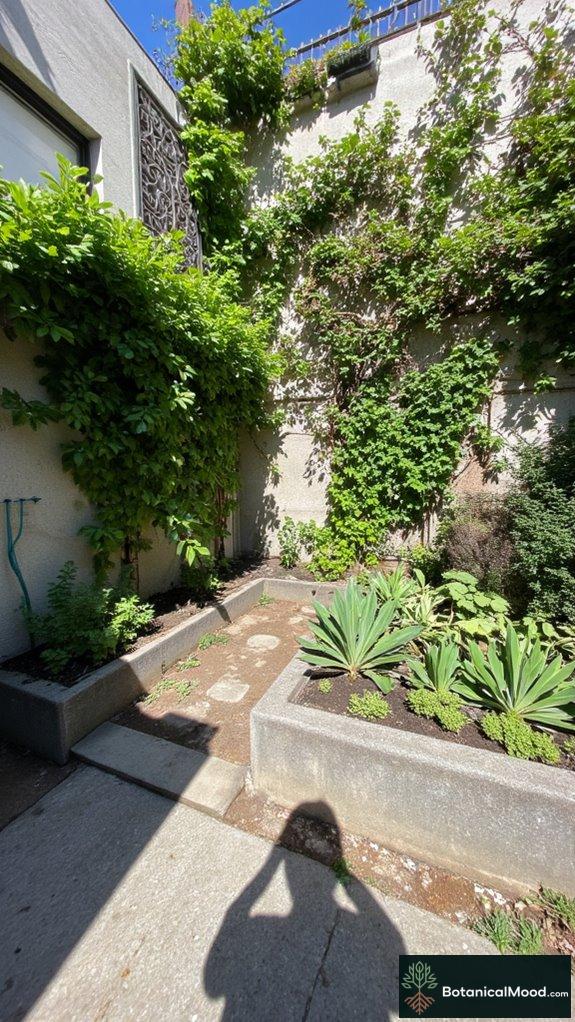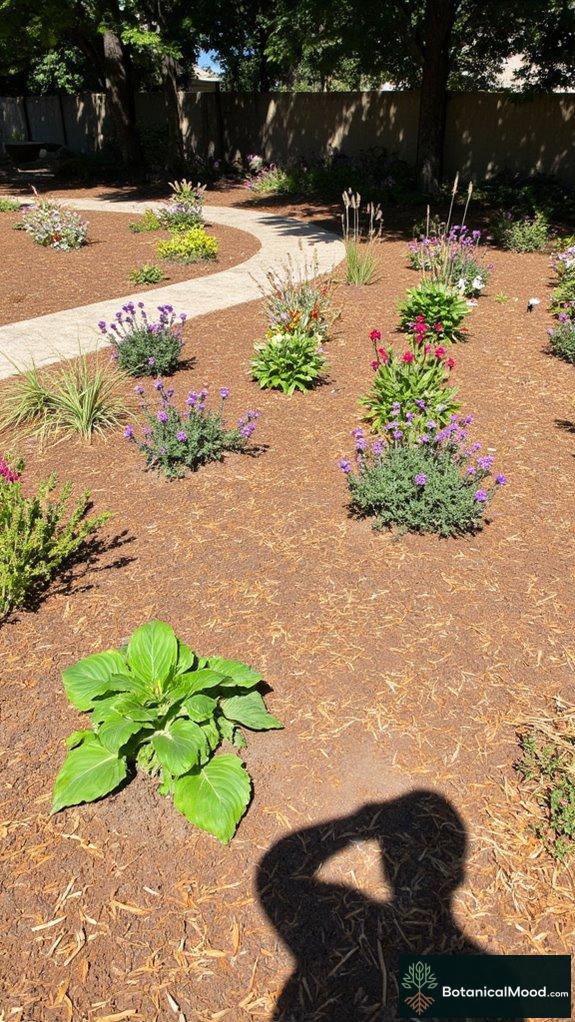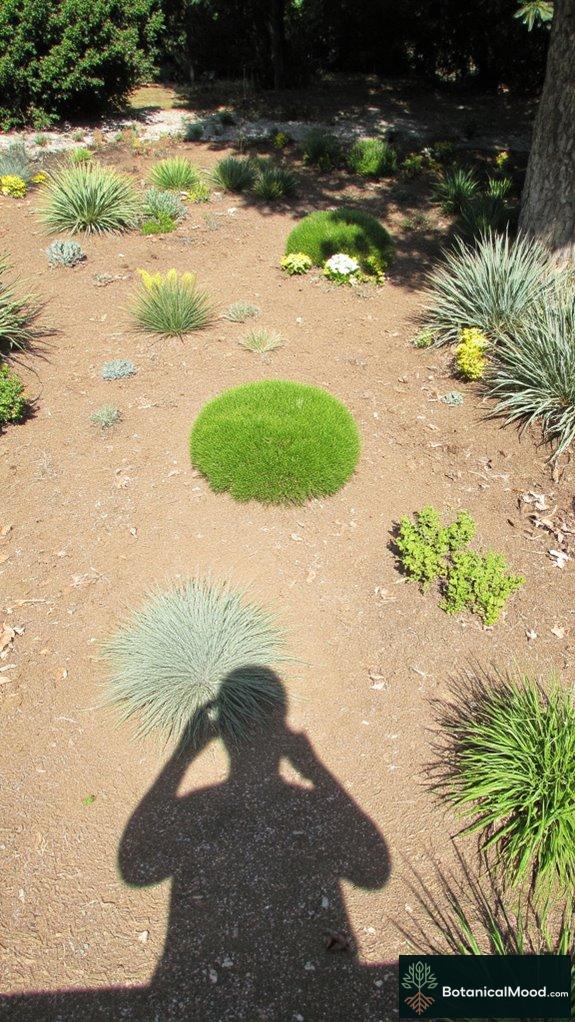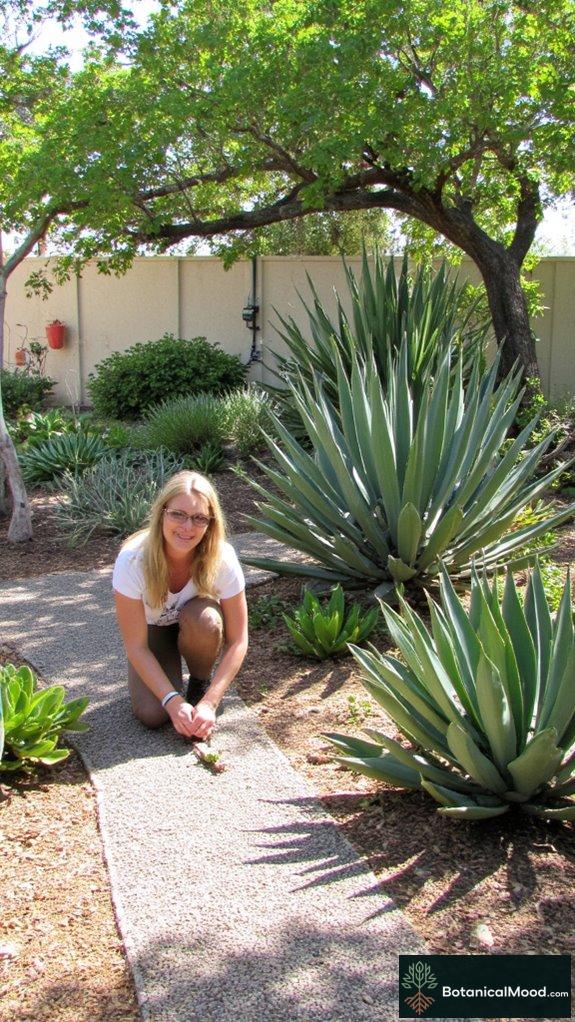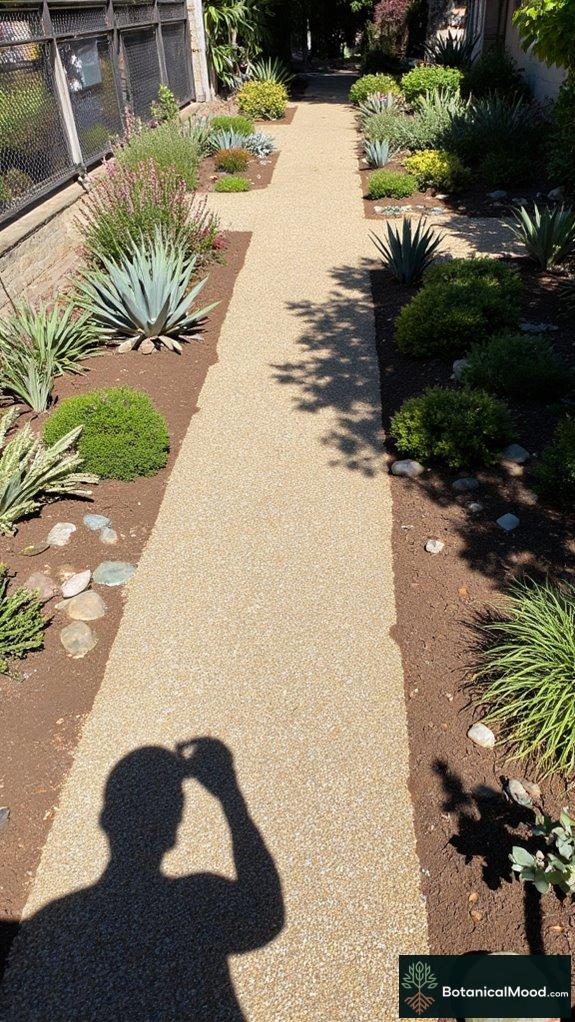Ever thought a tiny space could become a lush paradise?
I did.
When I discovered vertical gardening, I felt like a genius! Using trellises and nifty wall-mounted planters from GreenStalk, I crammed in *Jasminum* (Jasmine) and *Lathyrus odoratus* (Sweet Peas) like a pro.
Pallet Gardens? Totally fab DIY vibes!
And guess what? Drip irrigation met moisture-retaining magic – my plants are thriving! Who knew I could stress so much about keeping plants alive, only to realize they can flourish with some strategic planning?
Ready to spice up your gardening journey?
Creative Garden Design: My Vertical Garden Adventure
Last summer, I decided to create my own vertical garden, armed with nothing but a paltry budget and a dream. I splurged on a tiered planter, hoping to imitate the fancy gardens I saw online. Spoiler alert: green thumbs don’t come installed!
I picked *Herbs* for culinary delights, and yes, I still snagged a few *Lathyrus* just for visual appeal. The real challenge? Finding a place to hang my creations where they wouldn’t look like a jumble of chaos. But when I finally struck the right balance, I felt like I had just struck gold.
Even my neighbors were impressed! Who knew that optimizing small spaces would include a touch of my very own outdoor flair?
Quick Takeaways
- Vertical gardens create lush green spaces in limited areas, transforming neglected corners into vibrant ecosystems with optimal plant placement.
- Select climbing and sun-loving plants, like Jasmine and Sweet Peas, to maximize vertical growth and enhance garden aesthetics.
- Utilize DIY systems, such as pallets and hanging bottles, to cultivate vertical gardens, offering customizable designs for personal tastes and available space.
- Implement drip irrigation and moisture-retaining materials to ensure efficient water management, supporting sustainable growth for vibrant plants like herbs and strawberries.
- Engage with local communities through workshops to promote urban gardening, fostering a shared spirit and enhancing biodiversity in confined spaces.
Maximizing Space: Vertical Garden Structures

When it comes to maximizing space in small gardens, vertical garden structures can be game-changers for avid gardeners like myself. By employing various vertical structure types, such as trellises and wall-mounted planters, I’ve transformed my limited area into a lush retreat.
These vertical planting systems not only save ground space but also create stunning visual height, drawing the eye upward. Brands like GreenStalk and Vertical Garden Supply offer innovative solutions that cater to diverse gardening styles. Incorporating creative vertical garden design ideas can help you make the most of challenging areas.
When designed thoughtfully, these elements enhance the aesthetics, inviting greenery into otherwise neglected corners, thereby fostering a thriving ecosystem that brings joy and tranquility to my living space.
Choosing the Right Plants for Vertical Growth
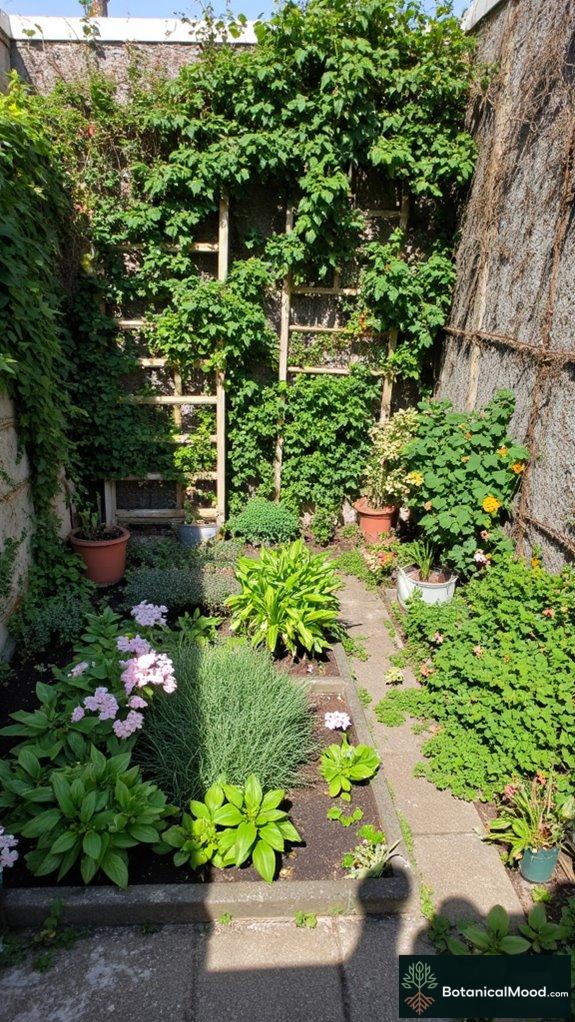
Selecting the right plants for vertical growth can truly elevate the charm of any small garden, transforming it into a vibrant oasis.
When I consider climbing plants like Jasmine (Jasminum spp.) or Sweet Peas (Lathyrus odoratus), I focus on their light requirements and how they’ll fit into my space.
Sun-loving options thrive against sunny trellises, while shade-tolerant varieties create lush coverage in darker corners.
Sun-loving plants flourish on bright trellises, while shade-tolerant species bring greenery to the shadier nooks.
Using a mix of textures and colors adds visual interest, allowing for an eye-catching vertical display. Incorporating sustainable urban gardening techniques not only enhances your garden’s appeal but also contributes to environmental health.
DIY Vertical Gardening Systems: Design Models
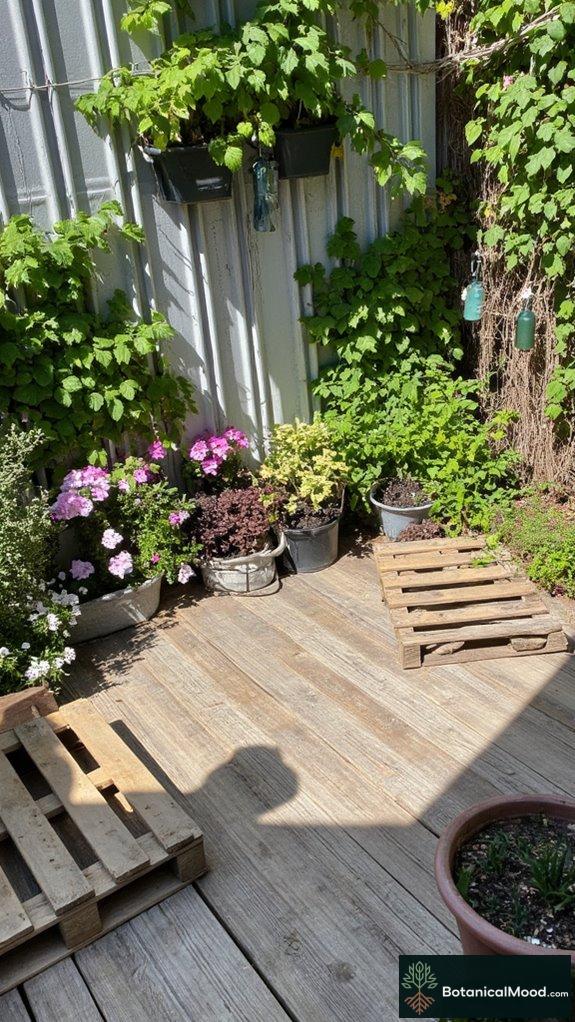
Creating a vertical garden can be one of the most rewarding experiences, particularly in small spaces where every inch counts.
With a modular design, you can customize your setup using various frame materials to suit your taste and space effectively.
Here are three inspiring design models you can consider:
- Pallet Gardens: Repurpose wooden pallets, enhancing their appeal with vibrant herbs like Ocimum basilicum (basil) or colorful flowers such as Petunia × hybrida (petunia).
- Planter Walls: Use sturdy metal or plastic frames to securely hold pots of your favorite climbing plants.
- Hanging Bottles: Recycle glass bottles suspended on a string, creating a unique aesthetic while cultivating trailing plants like Sedge (Carex).
Water Management Techniques for Sustainable Growth
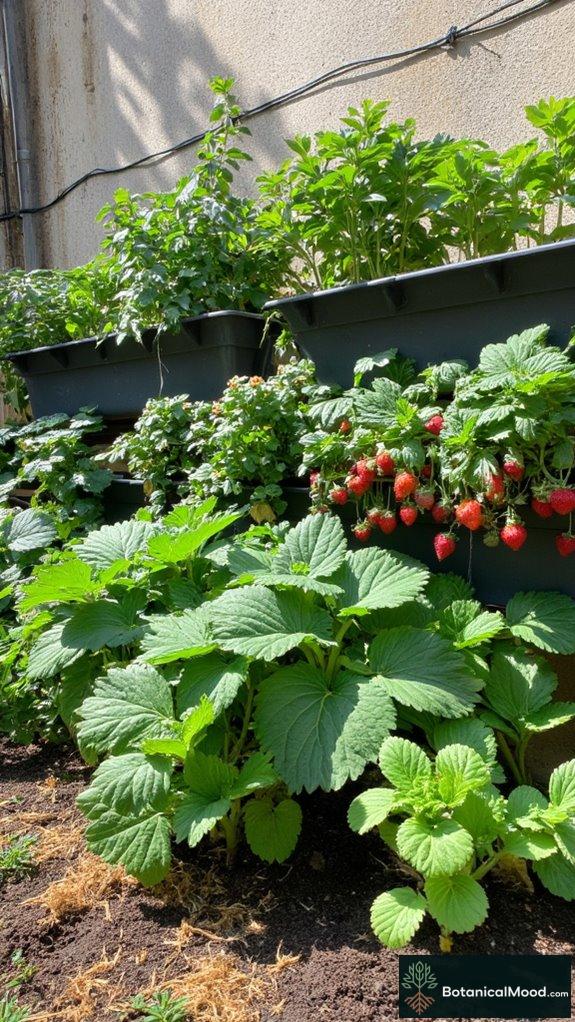
Effective water management is a vital aspect of nurturing vibrant vertical gardens, especially in the confined spaces typical of urban living.
Utilizing drip irrigation systems allows me to efficiently deliver moisture directly to plant roots, minimizing waste and ensuring they receive just the right amount of water.
In addition, incorporating materials that enhance moisture retention, such as coconut coir or vermiculite, means I can maintain consistent hydration levels.
This balance is essential for thriving plants like strawberries (Fragaria × ananassa) or herbs like basil (Ocimum basilicum).
Sustainable growth isn’t just about beauty; it’s about smart techniques that empower my gardening experience.
Enhancing Aesthetics With Creative Plant Arrangements

When it comes to enhancing the aesthetics of my vertical garden, the arrangement of plants can be just as important as the plants themselves.
Here’s how I create colorful arrangements that elevate natural decor:
- Layering Heights: I mix trailing plants like *Ivy* (Hedera helix) with taller specimens like *Sorghum* (Sorghum bicolor), creating a pleasing visual hierarchy.
- Color Coordination: I focus on a color palette, such as vibrant greens and soft purples, to bring harmony.
- Textures and Patterns: Using plants with varied leaf textures like *Ferns* (Polypodium) complements the overall aesthetic.
These strategies impart sophistication to my urban oasis.
Integrating Technology for Smart Vertical Gardens
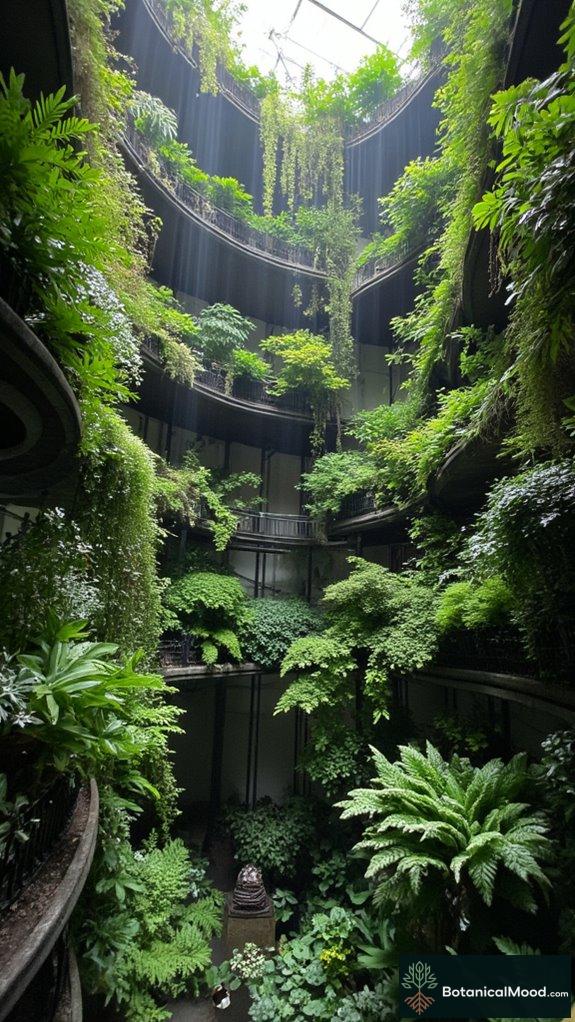
Integrating technology into the domain of vertical gardening not only amplifies the beauty and functionality of urban spaces, but it also provides a sophisticated approach to plant care that engages even the most novice gardener.
With sensor integration and automation systems, I can create a seamless experience. Smart irrigation systems intelligently deliver water, while plant monitoring tools allow for precise climate adaptation.
App connectivity enhances user interfaces, making data tracking intuitive and actionable. For example, with the help of various applications, I can manage light exposure for my succulents (Echeveria spp.) or adjust humidity levels for ferns (Polypodium spp.), transforming my vertical garden into a thriving ecosystem.
Community Engagement in Vertical Gardening Projects

Community engagement plays an essential role in the success of vertical gardening projects, especially in urban areas where shared green spaces are often scarce.
By involving the neighborhood, we can cultivate more than just plants; we cultivate community spirit.
Here are some effective strategies:
- Community Workshops: Host hands-on sessions that teach sustainability practices while nurturing local plants such as Basil (Ocimum basilicum) or Strawberry (Fragaria × ananassa).
- Gardening Initiatives: Launch projects that transform underutilized spaces into vibrant neighborhood gardens.
- Local Partnerships: Collaborate with schools for educational programs, fostering a deeper appreciation for urban greening.
Overcoming Challenges in Urban Vertical Gardening
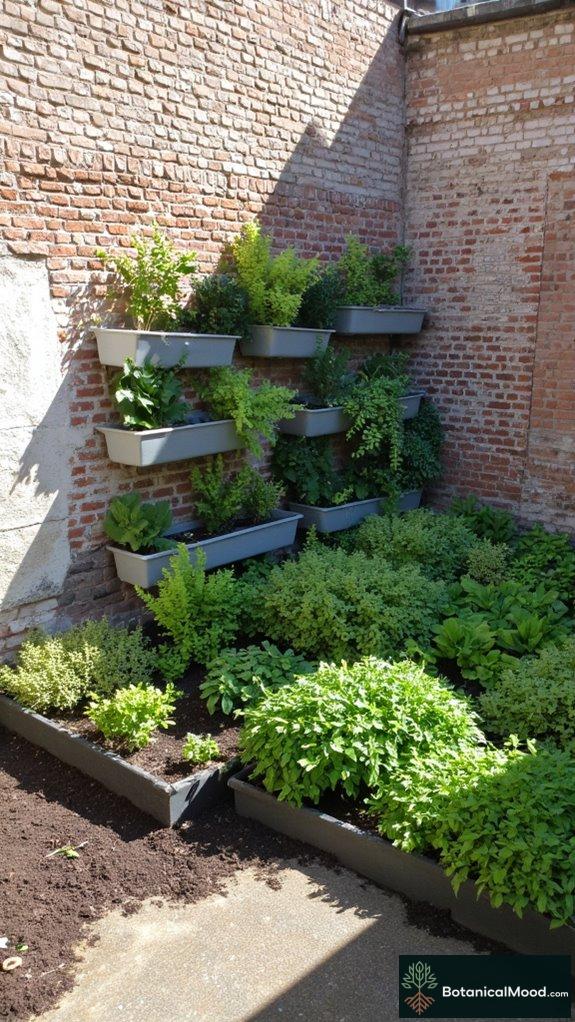
Urban vertical gardening, while an exciting endeavor, often presents a unique set of challenges that can deter even the most passionate gardeners.
Here’s a quick snapshot of the key obstacles I’ve faced:
| Challenge | Solution |
|---|---|
| Sustainability Issues | Focus on native plants (e.g., Achillea millefolium) |
| Light Availability | Utilize reflective materials for ideal sunlight |
| Design Constraints | Maximize verticality with modular units |
Vertical Planter Ideas for Balconies
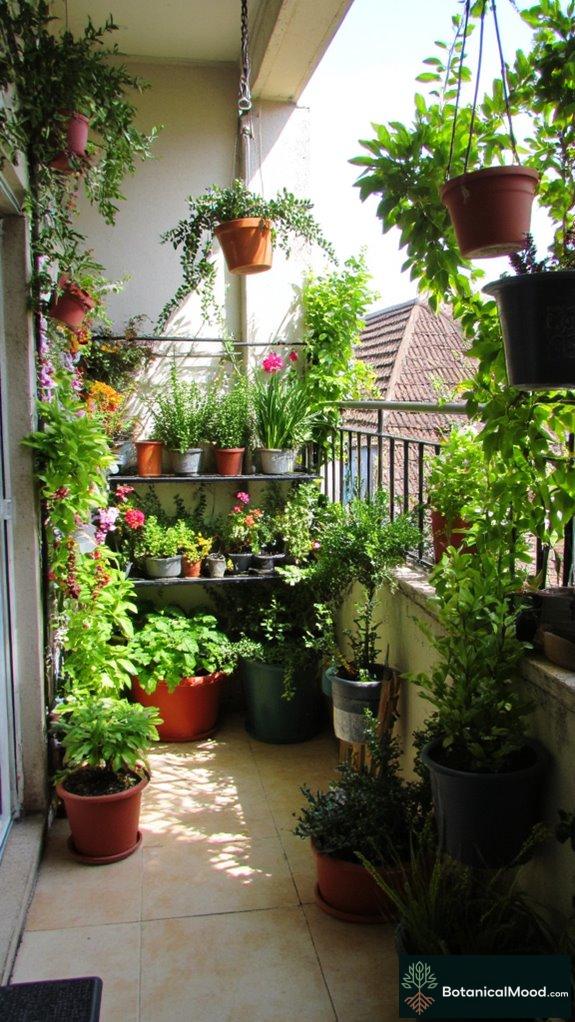
When you’re limited by space but still yearn for a flourishing garden, vertical planters can transform even the smallest balcony into a vibrant oasis. Here are some practical ideas to ponder:
- Hanging planters: Suspend them from ceiling hooks, adding layers of greenery.
- Stacked planters: Arrange pots in a tiered setup, allowing for diverse plant varieties.
- Wall planters: Attach racks or hooks to your walls, creating living art with herbs and flowers.
Utilizing pocket gardens or DIY planters from repurposed materials not only maximizes your balcony but also reflects personal style.
Maximize your balcony while showcasing your unique style with pocket gardens and DIY planters made from repurposed materials.
Embrace the beauty of vertical gardening today!
Vertical Gardening Layout Tips
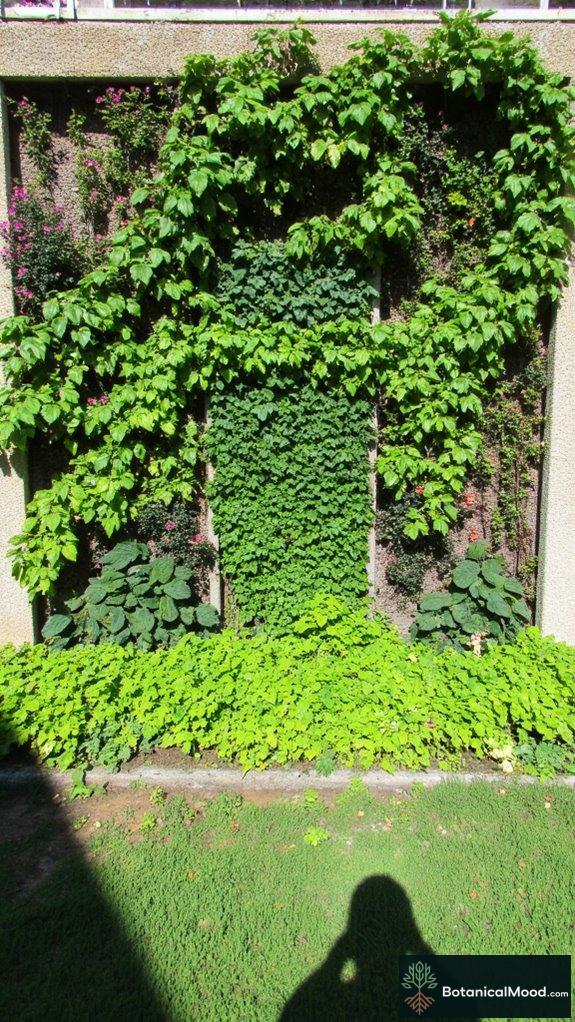
Crafting a stunning vertical garden is both an art and a science, and understanding key layout tips can greatly elevate the beauty of your small space.
| Layer | Plant Type | Design Layering |
|---|---|---|
| Bottom | Groundcovers (Soleirolia soleirolii) | Foundation Layer |
| Middle | Herbs (Ocimum basilicum) | Seasonal Rotation |
| Top | Climbers (Phaseolus vulgaris) | Light Optimization |
Establishing vertical tiers guarantees harmony; position shorter plants at the front or bottom, while sun-lovers occupy higher layers. Effectively grouping plants by their environmental needs simplifies maintenance, leaving your garden flourishing.
Meet the Garden Visionary

Maria Johnson from Portland, Oregon, always dreamed of a lush garden despite living in a petite urban apartment, inspiring her journey towards vertical gardening to maximize her limited space.
To bring her vision to life, Maria meticulously researched garden design principles, focusing on vertical systems. She sketched various layouts before finalizing plans for wall-mounted planters and utilizing trellises to guarantee her plants could thrive upward while enhancing visual appeal.
Creating her vertical oasis involved using tools like the Fiskars Garden Claw for easy digging. She chose products from brands such as GreenStalk for tiered planters. Moreover, local horticulturist Emily Carter provided guidance on plant selection and care best suited for vertical growth.
Urban Garden Space Optimization

While maneuvering urban living often presents challenges in cultivating vibrant green spaces, innovative strategies for garden optimization offer a solution that transforms modest environments into lush sanctuaries.
Urban living may pose challenges for greenery, but creative garden optimization can turn small spaces into thriving oases.
Here’s how I optimize urban garden spaces:
- Vertical Planting: Utilizing wall planters makes the most of tight spaces, encouraging biodiversity.
- Strategic Location: Geospatial analysis helps place gardens where they’re most beneficial, reducing food access gaps.
- Sustainable Design: Incorporating native plants (e.g., Echinacea purpurea) enhances the urban ecosystem, promoting health and resilience.
Summary
I’ve discovered that even the tiniest spaces can become lush escapes with vertical gardening. A few well-chosen plants, like Trachycarpus fortunei for shade or fragrant Thymus vulgaris, can make all the difference. With a bit of creativity, I’ve turned my small balcony into a vibrant oasis.
I’d love to hear about your own experiences with vertical gardening! What challenges or joys have you encountered?
Feel free to share pictures of your garden and tell us how you designed it. Let’s inspire each other!
References
- https://risegardens.com/blogs/communitygarden/vertical-farming-s25
- https://www.precedenceresearch.com/vertical-garden-construction-market
- https://green.org/2024/01/30/vertical-gardens-and-water-management-in-urban-areas/
- https://academic.oup.com/jue/article/8/1/juac016/6726544
- https://pmc.ncbi.nlm.nih.gov/articles/PMC9739368/
- https://dataintelo.com/report/urban-vertical-garden-market
- https://sempergreen-international.com/us/blog/vertical-gardens-the-future-of-urban-green-spaces/
- https://www.lawnstarter.com/blog/studies/best-cities-urban-gardening/
- https://www.ars.usda.gov/oc/utm/vertical-farming-no-longer-a-futuristic-concept/
- https://www.edengreen.com/blog-collection/what-is-vertical-farming
- https://www.ikea.com/ph/en/rooms/outdoor/how-to/vertical-garden-ideas-to-spruce-up-small-balconies-pub0012b570/
- https://www.parkseed.com/blogs/park-seed-blog/12-innovative-vertical-gardening-ideas-for-maximizing-small-spaces
- https://twillyandfig.com/best-vertical-garden-ideas-for-condo-balcony-ideas/
- https://www.sowanddipity.com/diy-vertical-gardens/
- https://www.youtube.com/watch?v=pfOpDKur7ZE
- https://www.houzz.com/photos/vertical-balcony-garden-ideas-phbr1-bp~t_28359~a_34-281
- https://www.homedepot.com/b/Outdoors-Garden-Center-Planters-Vertical-Garden-Planters/N-5yc1vZc8so
- https://www.bretmarlandscape.com/blog/key-principles-for-effective-garden-layout-and-design
- https://edis.ifas.ufl.edu/publication/EP449
- https://www.luxushomeandgarden.com/blogs/news/how-to-plan-design-vertical-garden
- https://plantperfect.com/how-to-design-the-perfect-vegetable-garden-layout/
- https://www.loveyourlandscape.org/expert-advice/shrubs-and-flowers/interiorscaping/vertical-gardens/
- https://www.academygardendesign.com/blog/garden-design-principles–balance-and-proportion
- https://www.gardendesign.com/landscape-design/rules.html
- https://extension.psu.edu/principles-of-garden-design/
- https://pmc.ncbi.nlm.nih.gov/articles/PMC11922833/
- https://acsess.onlinelibrary.wiley.com/doi/abs/10.1002/uar2.20019
- https://www.nature.com/articles/s41598-025-07578-2
- https://kinder.rice.edu/urbanedge/urban-gardening-has-taken-root-and-its-time-cities-encourage-new-growth
- https://www.accscience.com/journal/JCAU/articles/online_first/4700
- https://asu.elsevierpure.com/en/publications/gardening-in-the-desert-a-spatial-optimization-approach-to-locati


